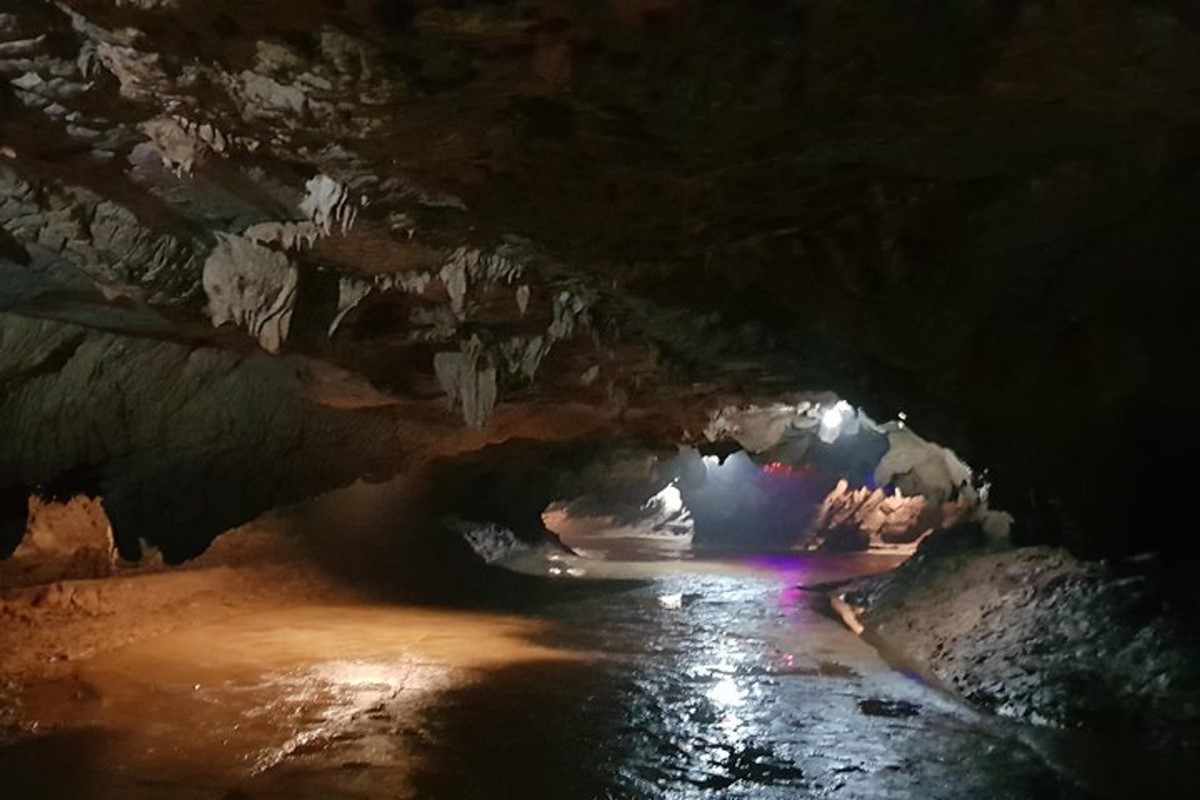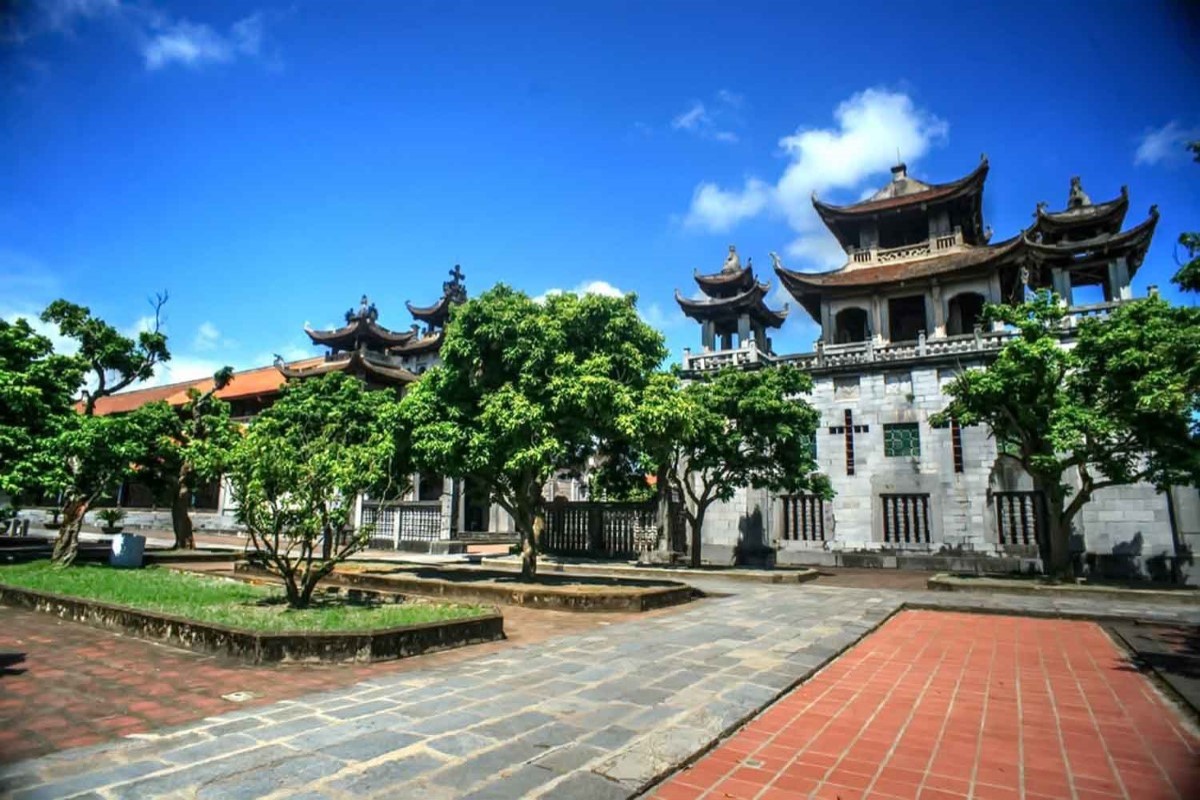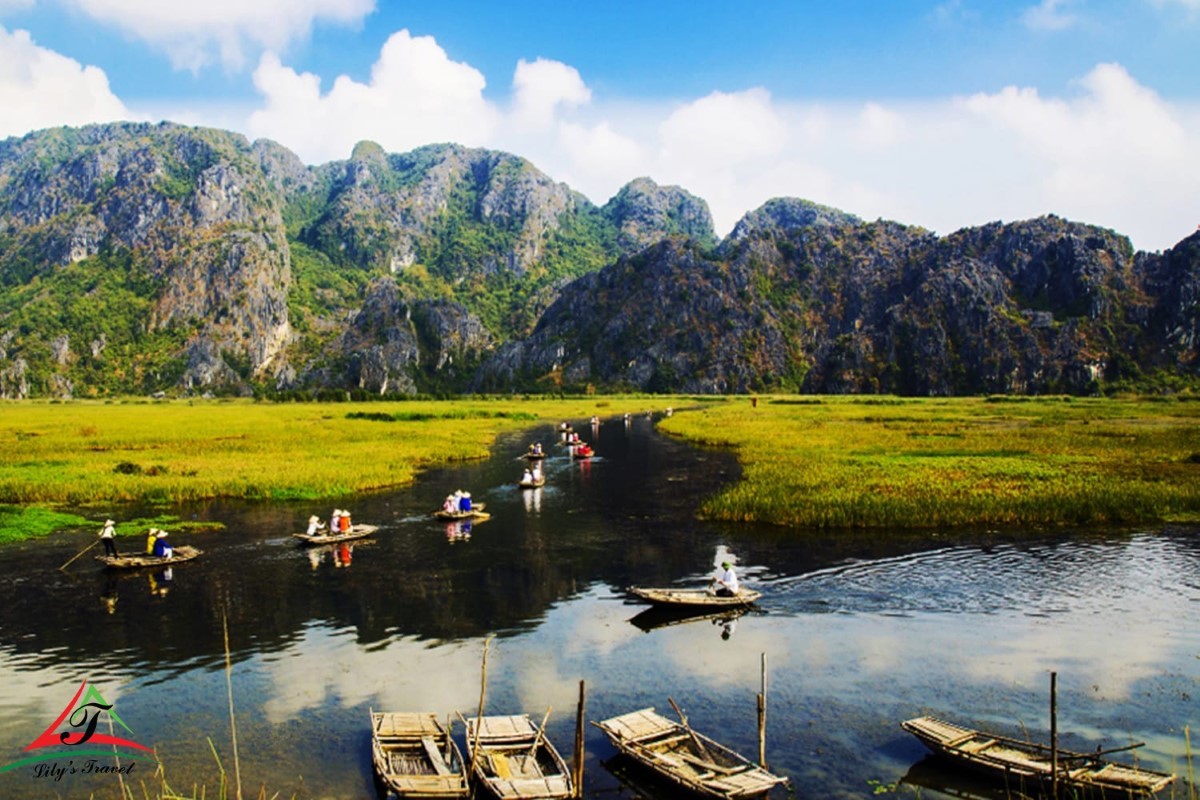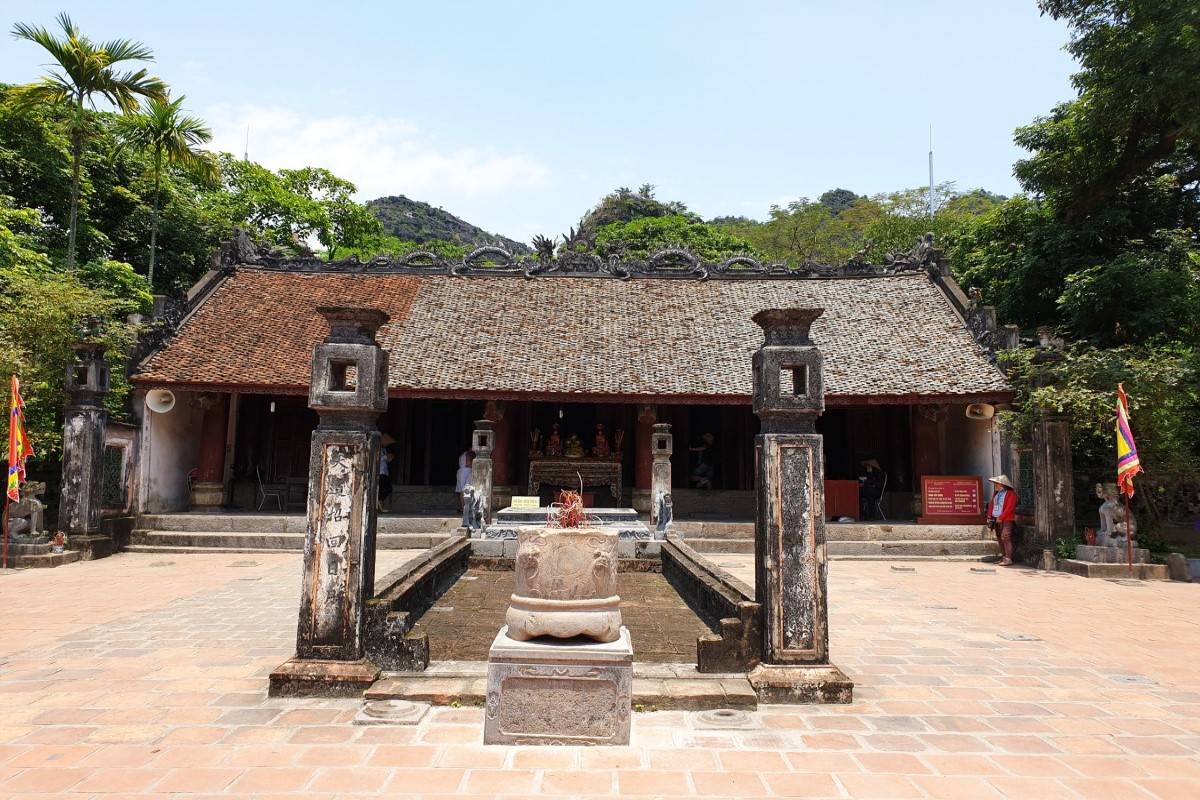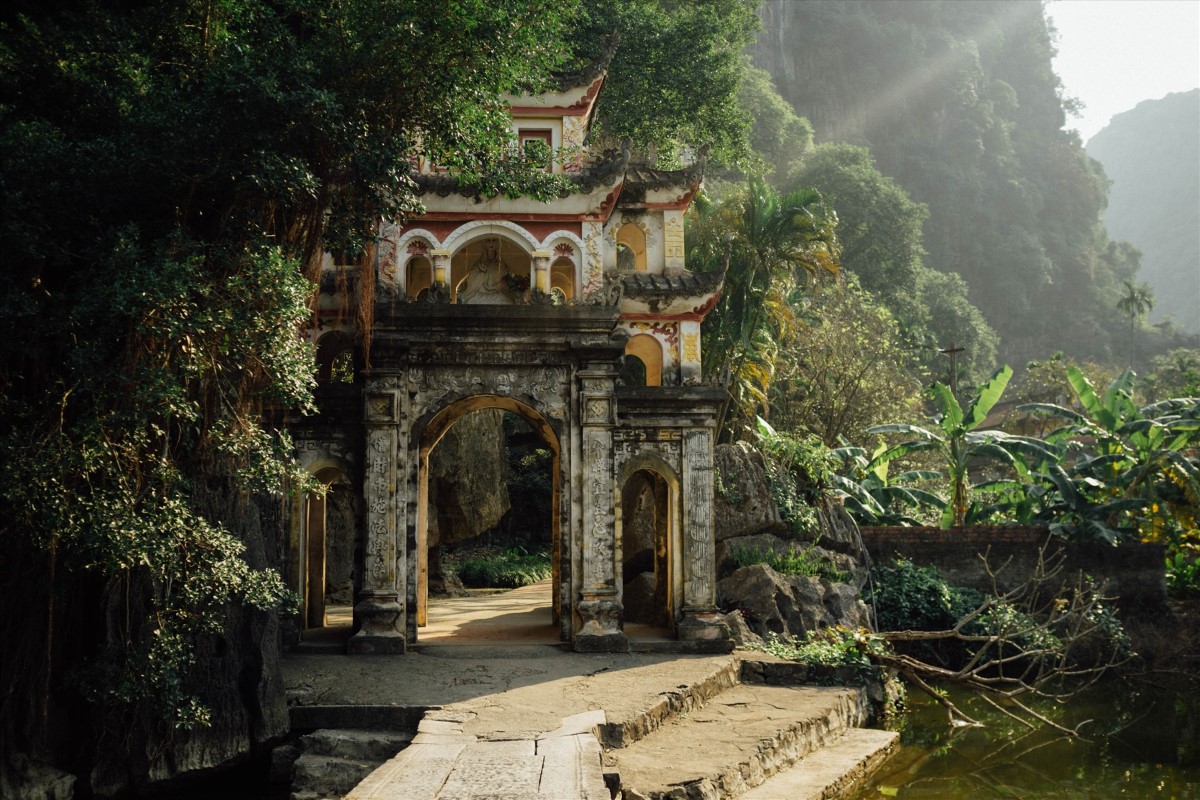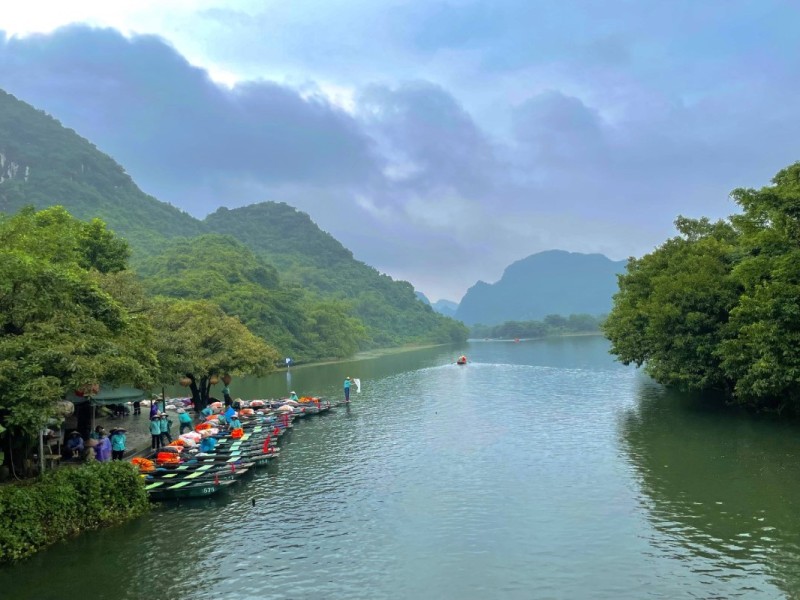Thung Nang Ninh Binh: Complete Travel Guide, Boat Tours & Tips
Thung Nang Ninh Binh offers a peaceful boat tour experience through lush valleys and limestone karsts, showcasing stunning rice fields and unique caves. Visitors enjoy authentic local culture and scenic tranquility, making it a perfect destination for nature lovers seeking a less crowded alternative to nearby attractions.
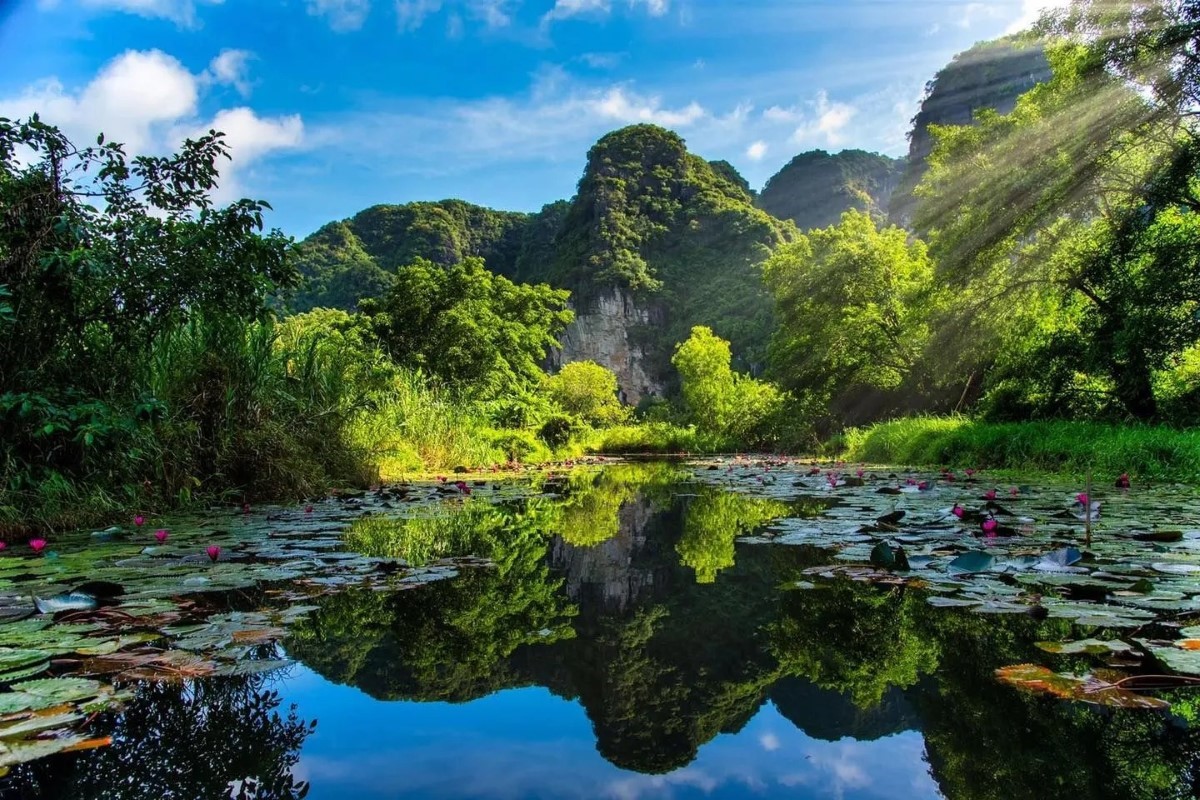
Discovering Thung Nang – What Makes This Hidden Gem Special
Nestled in the heart of Ninh Binh, Thung Nang offers a serene escape that feels worlds away from the busier, well-trodden sites. Known affectionately as the "Valley of Sunshine," this peaceful spot is a hidden gem that charms visitors with its lush landscapes and quiet ambiance. Unlike the popular Tam Coc and Trang An, Thung Nang promises an authentic and tranquil experience where the calm waters and towering limestone karsts invite you to slow down and truly connect with nature. As you glide along the gentle river, the vibrant green rice paddies stretch out under warm sunlight, creating a stunning backdrop perfect for those seeking unique and scenic adventures. Whether you’re drawn by the peaceful atmosphere, natural beauty, or photo-worthy vistas, Thung Nang Ninh Binh stands out as a must-see destination off the beaten path. Dive into this complete guide to uncover why Thung Nang is a top choice for travelers craving both beauty and tranquility.
Take the first step toward your unforgettable visit to Thung Nang Ninh Binh and discover its unique charm for yourself.

What is Thung Nang and Why Should You Visit?
Thung Nang Ninh Binh is a lesser-known valley often called the "Sun Valley" due to the way sunlight filters through its towering limestone cliffs, illuminating the peaceful waters below. This destination offers a calm and unspoiled environment where visitors can enjoy gentle boat rides through emerald rice fields and caves, making it a perfect contrast to the more crowded sites nearby. What sets Thung Nang apart is its untouched natural beauty and the chance to experience authentic rural life in Ninh Binh. Whether you are seeking quiet reflection, stunning scenery, or a unique boat ride, Thung Nang provides an intimate and memorable journey into Vietnam’s countryside.
Planning your trip to Thung Nang means choosing a destination that blends scenic views with tranquility, away from the tourist crowds, making it an essential part of any Ninh Binh itinerary.
The story behind the name and the “Sun Valley” legend
The name Thung Nang translates to "Valley of Sunshine," a fitting title inspired by a local legend. According to tradition, the valley was blessed with golden light that nurtured its fertile lands and protected its people. This “Sun Valley” legend adds a layer of cultural richness, connecting the landscape to stories passed down through generations. As the sun rises, the valley is bathed in warm, golden hues that seem to celebrate life and growth. This natural spectacle has captivated locals and travelers alike, making Thung Nang more than just a scenic spot—it is a place shaped by light, myth, and a deep connection to nature.
Visiting Thung Nang offers not just breathtaking views but also a chance to experience this cultural narrative woven into the valley’s identity.
Unique scenery and peaceful atmosphere compared to nearby attractions (Tam Coc, Trang An)
While Tam Coc and Trang An are famous for their impressive limestone formations and boat tours, Thung Nang Ninh Binh offers a different experience—one that emphasizes peace and solitude. The valley’s calm waters are less trafficked, and the landscape feels untouched, allowing for a more personal connection with the natural surroundings. Here, you can enjoy quiet moments among vibrant green rice paddies, listen to birdsong, and watch local farmers at work without the distractions of large tourist groups. This peaceful atmosphere, combined with its lush scenery, makes Thung Nang ideal for travelers seeking an authentic and relaxed day out in Ninh Binh.
Discover the tranquil beauty of Thung Nang Ninh Binh for a calm retreat from the bustling tourist hubs nearby.
Unique Photo Opportunities and Instagram Spots
Thung Nang is a photographer’s dream, filled with picture-perfect spots to capture your journey. Key locations include:
- River bends framed by towering limestone cliffs: offering dramatic contrasts and natural framing for stunning shots.
- Sunlit rice fields reflecting in calm waters: creating mirror-like images especially in early morning or late afternoon.
- Hidden caves along the boat route: showcasing intriguing formations with natural light filtering in.
- Traditional wooden boats with local rowers: adding cultural depth and authentic moments to your photos.
- Quiet pathways and rural scenes beyond the riverbanks: capturing everyday life and the serene countryside vibe.
These spots not only enhance your photo collection but also give you a chance to share the magic of Thung Nang Ninh Binh on social media with friends and fellow travelers.
Make sure your camera is ready to capture the breathtaking views and unique moments throughout your visit to Thung Nang.
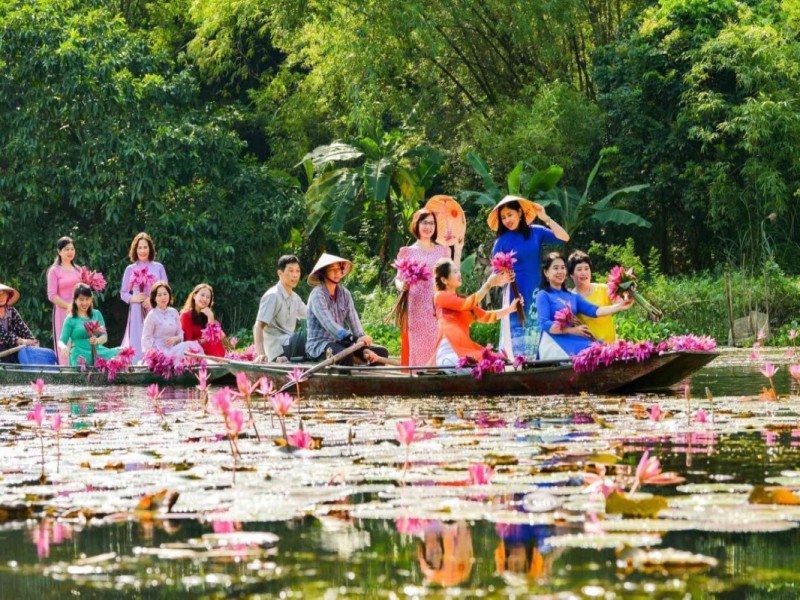
Where is Thung Nang? Location, Address, and How to Find It
Finding Thung Nang Ninh Binh is easier than you might think once you know the exact details. This hidden valley is located in Ninh Hai Commune, within the Hoa Lu District of Ninh Binh Province. Travelers looking to explore this peaceful spot will appreciate its proximity to popular attractions like Tam Coc and Trang An, yet it remains wonderfully off the beaten path. Whether you’re navigating with GPS or planning your route by landmarks, understanding the precise location and access points will help you arrive smoothly and start your adventure without hassle.
Plan your trip with confidence by knowing exactly where to find Thung Nang Ninh Binh and how to get there from surrounding villages and piers.
Official address, administrative details, and GPS coordinates
The official address for Thung Nang is:
- Location: Dam Khe Hamlet, Ninh Hai Commune, Hoa Lu District, Ninh Binh Province, Vietnam.
- GPS Coordinates: Approximately 20.2390° N latitude and 105.9660° E longitude.
This precise information helps with accurate navigation, whether you’re using a GPS device or map application. The administrative details confirm you are heading to the correct rural area, ensuring no confusion with other valleys or tourist spots nearby. Having these specifics is vital for smooth planning and helps avoid delays or misdirections.
Keep this address handy when booking transport or planning your itinerary to ensure easy access to the heart of Thung Nang.
Getting your bearings: nearby villages, piers, and landmarks
Understanding the geography around Thung Nang will enhance your travel experience and ease your arrival. Here are some key nearby reference points:
- Dam Khe Hamlet: The closest local village providing a glimpse of rural life and a starting point for many visitors.
- Thung Nang Boat Pier: The official embarkation spot for boat tours through the valley’s waterways.
- Tam Coc and Trang An: Well-known tourist hubs just a short distance away, serving as popular day trip bases.
- Local rivers and rice paddies surround the valley, offering scenic markers and peaceful pathways.
These landmarks assist you in orienting yourself and planning connections to other destinations in Ninh Binh. Knowing the location of the boat pier is especially helpful for timing your visit and avoiding crowds.
Use these local points to map out your arrival and enjoy a smooth, well-organized visit to Thung Nang.
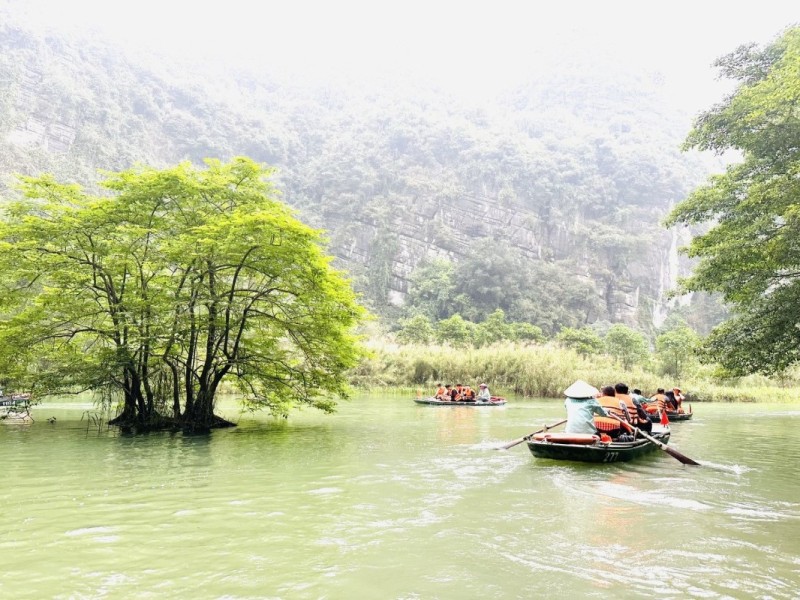
A Quick Look at Thung Nang’s History and Local Culture
Beyond its stunning landscape, Thung Nang Ninh Binh carries a rich cultural and historical heritage that deepens the visitor experience. The valley is dotted with ancient temples and spiritual sites that reveal centuries of local beliefs and traditions. Legends passed down through generations enrich the landscape with stories of gods, spirits, and ancestral rites. The rhythms of rural life here—seasonal farming, traditional ceremonies, and community events—reflect the close bond between people and nature. Exploring Thung Nang means connecting not only with its natural beauty but also with the cultural heartbeat that shapes its identity.
Immerse yourself in the heritage of Thung Nang to fully appreciate its unique place in Ninh Binh’s history and local life.
Ancient temples, legends, and local customs that shape the valley
Several noteworthy temples in Thung Nang offer a window into the spiritual traditions of the area. These sacred sites are intertwined with local legends that tell of heroic figures and mystical events tied to the valley’s origin. Visitors can witness traditional rituals, offerings, and festivals that continue to this day, performed with deep respect and cultural pride. These customs create a living tapestry of heritage that colors the valley with meaning beyond its physical beauty. Experiencing these elements allows travelers to engage with the intangible spirit of Thung Nang and gain insights into the enduring relationship between land, history, and community.
Respecting and learning about these traditions enhances your visit and fosters a deeper connection to the valley’s cultural landscape.
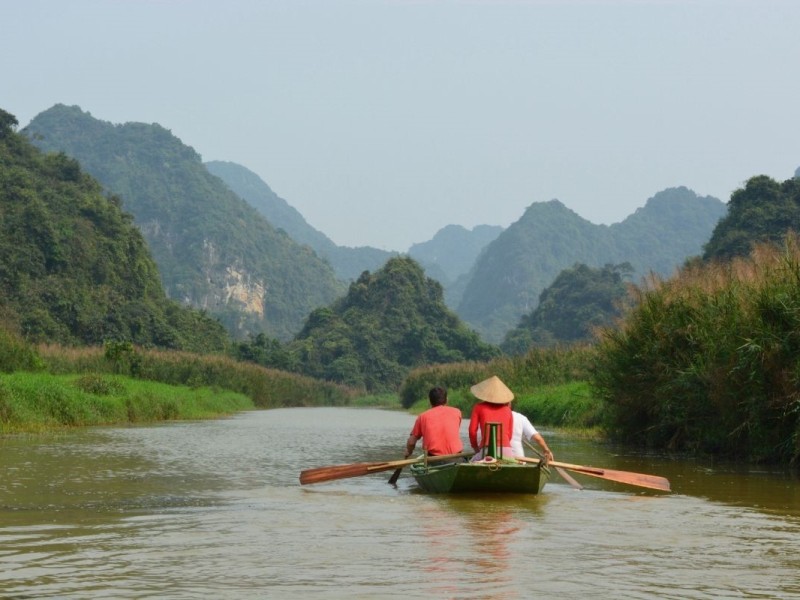
Getting to Thung Nang – Your Complete Access & Transport Guide
Reaching Thung Nang Ninh Binh is simple once you understand the best travel options available. Whether you are starting from Hanoi, Ninh Binh City, or the nearby tourist hub of Tam Coc, you have several transportation choices to suit your schedule, budget, and comfort preferences. This section provides clear, step-by-step guidance on how to get there, including pros and cons for each mode of transport, route suggestions, travel times, and insider tips to make your journey smooth and stress-free.
Use this guide to plan your trip confidently and enjoy the serene beauty of Thung Nang without any hassle.
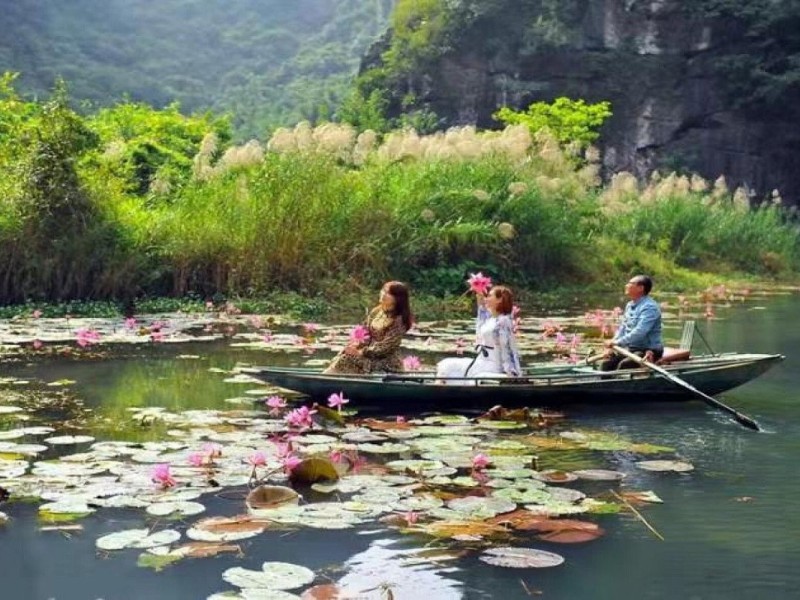
How to Reach Thung Nang from Hanoi, Ninh Binh City, or Tam Coc
If you’re wondering how to reach Thung Nang Ninh Binh from major starting points, this overview will help you decide the best option for your needs. From train rides and bus routes to private cars and scooters, each option varies in cost, convenience, and travel time. Knowing your choices allows you to pick the most efficient and comfortable way to arrive and start exploring this peaceful valley.
Understanding these transport options ensures you can plan your arrival to Thung Nang with ease and confidence.
By train, bus, taxi, or self-drive: what works best for each traveler (pros, cons, costs, times)
Getting to Thung Nang involves a mix of transport modes, each with its strengths:
This section explains these options so you can choose based on your travel style.
- Train to Ninh Binh City: The train from Hanoi is a comfortable, scenic ride taking about 2 to 2.5 hours. Tickets cost between $3 and $10. However, the train only takes you to Ninh Binh City, so you'll need a taxi or other transport for the last 30-minute trip to Thung Nang.
- Bus: Buses run regularly from Hanoi to Ninh Binh, usually costing around $5. They offer a budget-friendly option but have less flexible schedules and stops. Like the train, additional local transport is needed to reach Thung Nang.
- Taxi or Private Car: For convenience and speed, a taxi or private transfer directly from Hanoi to Thung Nang takes about 2 hours and costs approximately $40 to $60. This option is best for those seeking comfort and door-to-door service.
- Self-Drive: Renting a car or motorbike offers freedom to explore on your own schedule. However, local traffic can be challenging, and roads vary in condition, so this option suits confident drivers familiar with Vietnam’s driving environment.
Each method balances price, time, and comfort differently. Weigh these factors to select the best route for you.
Choosing the right mode of transport will help you arrive at Thung Nang Ninh Binh feeling ready to enjoy your adventure.
Suggested routes, approximate times, and handy travel tips
Planning your exact route can save time and reduce stress. Here are recommended travel paths with estimated durations and useful advice to navigate like a pro:
This section helps you visualize the journey and prepare for your visit.
- From Hanoi: The most common route is to take a train or bus to Ninh Binh City (about 2 to 2.5 hours). From there, take a taxi or rent a scooter for the 30-minute ride to Thung Nang. Alternatively, booking a private car for direct transfer simplifies the trip.
- From Ninh Binh City: You can take a local bus or taxi to Thung Nang, which usually takes under 40 minutes. Many travelers opt to rent a scooter here for more flexible exploration.
- From Tam Coc: The proximity makes this an easy journey — a taxi or motorbike ride will get you to Thung Nang in approximately 15 minutes. Combining visits to both places in one day is very popular.
Helpful tips: Start early in the day to avoid midday heat and crowds. Using offline maps or a local SIM card improves navigation and communication. Always agree on taxi fares in advance to avoid misunderstandings.
Following these routes and tips will make your journey to Thung Nang Ninh Binh smooth and enjoyable.
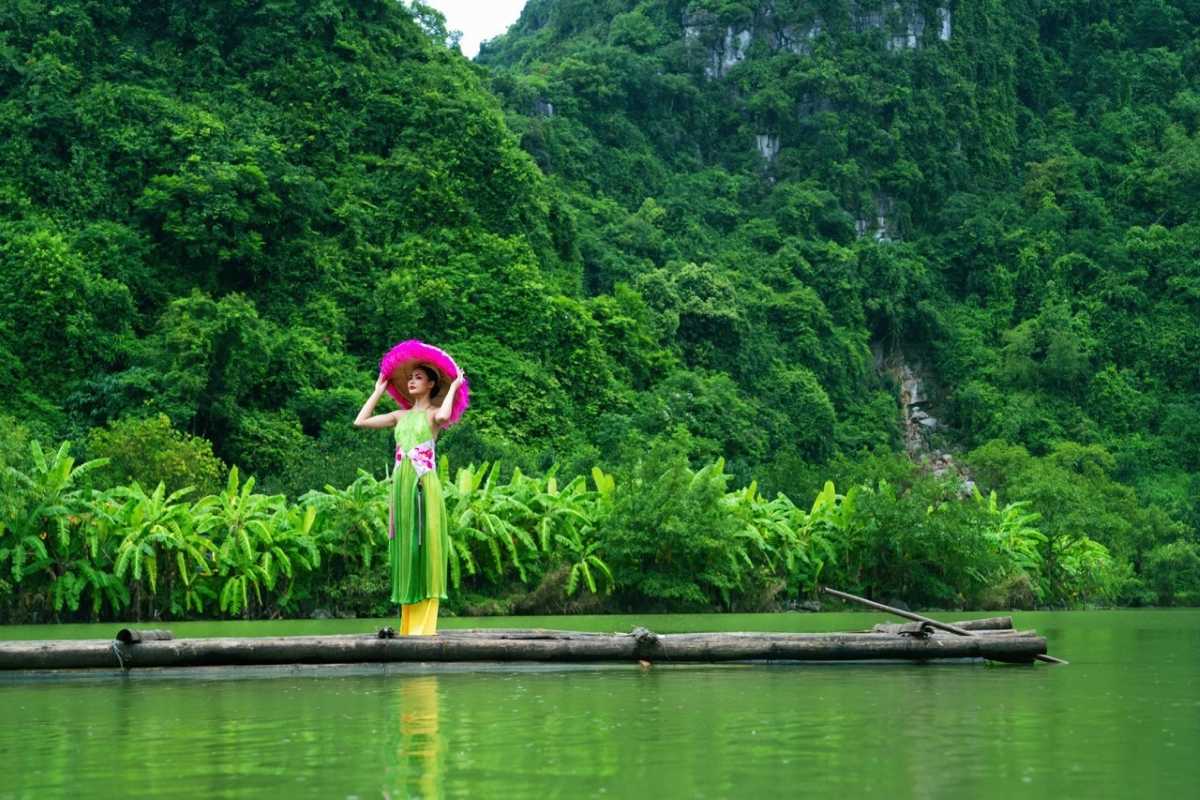
Practicalities of Getting Around Ninh Binh (Scooter Rental, Taxis, Grab)
Getting around Thung Nang Ninh Binh and the wider Ninh Binh area offers plenty of flexibility, especially if you prefer exploring at your own pace. Understanding the local transport options—from scooter rentals to taxis and ride-hailing apps—can make a big difference in how easily you move between sights. This section covers essential details on what’s available, how to use these services, and safety considerations, empowering you to navigate the region confidently and comfortably.
Equip yourself with practical transport knowledge to enjoy seamless mobility throughout Thung Nang Ninh Binh and beyond.
Scooter rental details, average costs, and safety considerations
Scooter rental is a popular choice among visitors seeking independence to explore Ninh Binh on their own schedule. Here’s what you should know:
- Rental Process: Most rental shops require your ID or passport as a deposit and provide basic helmets.
- Average Costs: Prices typically range from $5 to $8 per day, depending on the model and rental duration.
- Fuel: Scooters usually run on petrol, which is readily available at local stations and small roadside shops.
- Safety Tips: Always wear a helmet, check brakes and lights before riding, and avoid driving after dark if unfamiliar with local roads.
- Insurance: Confirm if the rental includes insurance; if not, drive cautiously and understand liability risks.
With these considerations in mind, renting a scooter gives you the freedom to explore Thung Nang Ninh Binh and surrounding areas at your own pace while enjoying the scenic routes.
Be sure to rent from reputable shops and follow safety guidelines to make your scooter experience both fun and secure.
Using local taxis, Grab (ride-hailing apps), and their availability
If scooters aren’t your preference, taxis and ride-hailing services like Grab provide convenient alternatives to move around Ninh Binh and Thung Nang.
- Taxis: Metered taxis are widely available, especially in Ninh Binh City and tourist hotspots. Confirm the meter is running to avoid overcharging.
- Grab App: Ride-hailing apps offer easy booking via smartphone, with transparent fares and driver ratings. Coverage in Ninh Binh is growing, making Grab a reliable option.
- Availability: While taxis are plentiful during the day, availability may decrease late at night or in more remote areas. Grab provides a useful alternative in such cases.
- Fare Tips: Expect fares to vary based on distance and time; always check the price estimate before confirming your ride.
- Language: Drivers may have limited English; having your destination written in Vietnamese can help.
Using taxis or Grab offers comfort and ease, especially if you prefer not to drive yourself or want to avoid navigating unfamiliar roads.
Leverage these transport options to enjoy stress-free and flexible travel throughout your visit to Thung Nang Ninh Binh.
Chloe's Scooter Navigation Tips: Conquering Ninh Binh's Backroads
Most travel guides will tell you how to get to Ninh Binh, but what about getting around once you're there? My recent trip to the "Halong Bay on Land" wasn't just about admiring the limestone karsts from a boat; it was about the exhilarating freedom of a scooter, a vibrant, sprawling canvas telling a story of independence and discovery. While the idea of navigating Vietnam's roads might initially send shivers down your spine, I’m here to tell you that renting a scooter in Ninh Binh was the single best decision I made, transforming my visit from a typical tourist experience into a truly immersive adventure. It allowed me to chase the golden hour at Thung Nang, discover hidden cafes, and truly feel the pulse of local life in a way no taxi ever could.
Setting the Scene: Anticipation and a Hint of Trepidation
Stepping off the train into Ninh Binh City, the humid air instantly wrapped around me, carrying the scent of burning incense and distant cooking fires. My initial plan was to rely on Grab or local taxis, but as I saw countless locals effortlessly weaving through traffic on their scooters, a spark of adventurous curiosity ignited. The thought of having that kind of freedom, to pull over wherever a scenic view called, or to wander down a tempting, unpaved lane, was irresistible. Yet, a tiny knot of apprehension tightened in my stomach. I’d ridden scooters before, but Vietnamese traffic is legendary. Would I be able to handle it? Could I find my way without getting hopelessly lost in the rice paddies? My expectations were a mix of excitement for boundless exploration and a healthy dose of "don't crash."
The Journey Unfolded: From Hesitation to Highway Hero
My first move was to secure a reliable scooter. I opted for a Honda Wave from my guesthouse in Tam Coc, a place that came highly recommended for its well-maintained bikes. The first few minutes were, admittedly, a bit wobbly. The sheer volume of motorbikes, the symphony of honks that seem to be a form of communication, not anger, felt overwhelming. I started slow, sticking to less crowded side roads around Tam Coc, letting myself get accustomed to the flow. My initial goal was the Thung Nang Ninh Binh pier, a place I’d heard was far more tranquil than its bustling counterparts.
The ride to Thung Nang was my true baptism by fire. The main roads were wider, but the local traffic was still a dance. I learned quickly to anticipate, to yield, and to embrace the gentle chaos. What struck me most was the ever-changing landscape. One moment, I was passing bustling local markets, the air thick with the aroma of spices and fresh produce; the next, I was winding through emerald green rice paddies, the wind whipping through my hair, revealing towering limestone karsts bathed in the morning sun. There were moments of genuine challenge – once, Google Maps tried to take me down a muddy track clearly meant for buffaloes, not Honda Waves! But these minor detours often led to delightful unexpected moments, like stumbling upon a tiny, ancient temple nestled among bamboo groves, its bells gently chiming in the breeze.
My most vivid memory is of navigating to Thung Nang just as the sun began to dip, casting long, golden shadows across the valley – living up to its "Sun Valley" name. The path narrowed, becoming quieter, and the air grew cooler, carrying the scent of damp earth and distant woodsmoke. I followed a series of small, hand-painted signs, feeling like an explorer uncovering a secret. The sound of my engine was soon replaced by the rhythmic dip of oars and the distant chatter of local boat women. It was pure, unadulterated tranquility, a reward for the journey.
Sensory and Emotional Immersion: The Freedom of the Open Road
The feeling of the wind on my face, the subtle rumble of the engine beneath me, the symphony of local life – distant roosters crowing, children laughing, the gentle swish of rice paddies – these were the sensory details that truly immersed me. Emotionally, the journey was a rollercoaster: initial apprehension gave way to a surge of pure exhilaration as I gained confidence. There was a profound sense of independence, of truly earning my discoveries. Pulling over to capture a perfect reflection of the karsts in a waterlogged field, or stopping for a spontaneous roadside sugarcane juice, felt deeply personal and fulfilling. The slight hesitation before making a challenging turn was always rewarded by the triumph of navigating it successfully. This was my personal connection to Ninh Binh, beyond the curated tours.
Unique Insights & Demonstrated Expertise: My Golden Rules for Scooter Success
Through trial and error, I developed a few "Chloe's Rules" for navigating Ninh Binh by scooter, elevating my experience beyond the average tourist:
- Embrace the "River Flow" of Traffic: Vietnamese traffic isn't about rigid lanes; it's a fluid river. Go with the flow, maintain a steady speed, and use your horn for communication (a quick honk signals "I'm here," not "Get out of my way!").
- Offline Maps are Your Best Friend (Seriously): Cell signal can be spotty in rural areas. Before you set off, download offline maps for Ninh Binh on Google Maps. This saved me countless times, especially on the backroads leading to Thung Nang. My offline maps Ninh Binh strategy allowed me to explore without constantly worrying about connectivity.
- Trust Your Gut (and the Locals): If Google Maps suggests a path that looks impossible or unsafe, it probably is. Don't be afraid to pull over and ask a local (even with gestures and a translation app). They often know the best, most scenic, and safest best scooter routes.
- Pack Light, Securely, and Smartly: A small backpack is best. Ensure it’s securely strapped. Always carry water, sun protection (hat, sunscreen), and a light rain jacket, as the weather can change quickly.
- Fill Up on Fuel When You See It: Gas stations can be sparse on some of the more rural routes. Don't wait until you're running on fumes.
- Always Wear a Helmet, Period: It's non-negotiable for your safety and often required by rental places.
Actionable Practical Takeaways:
- What to Bring: Small backpack, phone with offline maps, power bank, water bottle, sunglasses, hat, sunscreen, light rain jacket, small cash denominations.
- Best Time to Go: Early morning or late afternoon for cooler temperatures and softer light, especially for photography. Avoid peak midday sun.
- How to Interact Respectfully: A smile and a "Xin Chao" (hello) go a long way. Use hand gestures or a translation app for complex questions. Always ask permission before taking photos of people.
- What to Look Out For: Potholes (especially on smaller roads), rogue chickens crossing the road, and locals stopping suddenly for quick chats.
- Specific Recommendations:
- Thung Nang: Go for the serene atmosphere and beautiful reflections. It's truly a peaceful escape from the crowds.
- Tam Coc: A good base for accommodation and food, offering scooter rentals.
- Bich Dong Pagoda: Easily accessible by scooter from Tam Coc; combine with a visit to the surrounding area.
My scooter odyssey through Ninh Binh wasn't just a means to get from point A to point B; it was the heart of my adventure. It taught me to be more adaptable, more observant, and deeply connected me to the rhythm of Vietnamese life. The quiet hum of the engine, the wind on my skin, the kaleidoscope of green and gold fields rushing past – these are the sensations that now define my memory of Ninh Binh. If you crave genuine freedom and the thrill of discovery, if you want to peel back the layers of a destination beyond the usual tourist trail, then taking to the open road on two wheels is an unparalleled experience. It’s an adventure that promises not just stunning views, but a profound sense of personal accomplishment and a deeper appreciation for this incredible country.
Recommendation:
If you're seeking to truly immerse yourself in the landscapes and local culture of Ninh Binh, I wholeheartedly recommend renting a scooter. It offers an unmatched sense of freedom and access to hidden corners you might otherwise miss. Just go prepared, be confident, and embrace the beautiful chaos – it's an experience you won't soon forget!
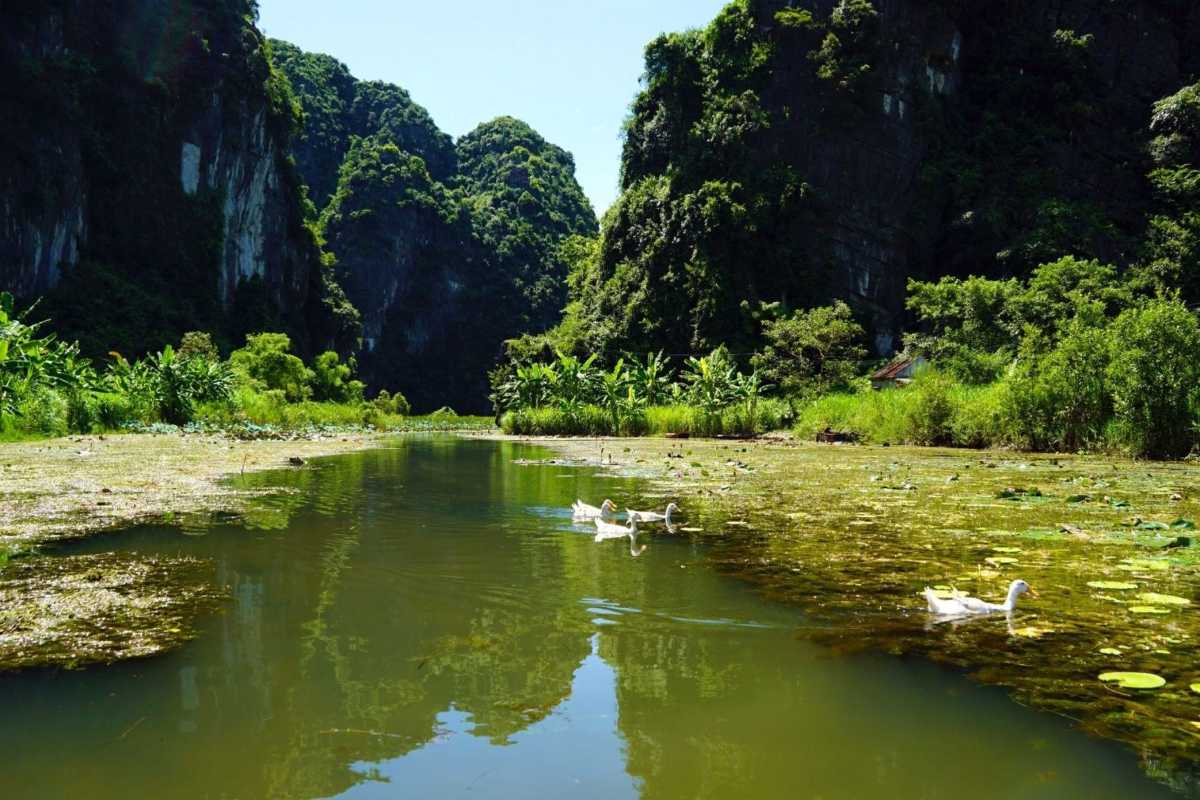
Where to Start Your Adventure – Thung Nang Boat Pier & Entry Details
Starting your journey through Thung Nang Ninh Binh begins at the right boat pier. Knowing exactly where to go, how to park, and what to expect at the entry point ensures a smooth and stress-free beginning to your adventure. This section provides clear, step-by-step guidance to help you find the correct dock and prepare for your boat tour without confusion or delay.
Follow these directions to confidently start your Thung Nang exploration with ease.
How to find the correct dock, parking info, and accessibility notes
Locating the Thung Nang boat pier is simple with the following practical tips:
- Dock Location: The official boat launch is situated near Dam Khe Hamlet in Ninh Hai Commune. Look for signposts marked “Thung Nang boat pier” along the main road.
- Parking: There is a small parking area adjacent to the pier for motorbikes and cars. It’s free but can fill up quickly during peak hours, so arrive early if possible.
- Accessibility: The dock is accessible by paved roads, suitable for vehicles and scooters. However, some areas near the water may have uneven surfaces, so wear comfortable shoes.
- Entry Process: Upon arrival, you can purchase tickets at the pier or confirm pre-booked tickets. Staff will guide you to your boat, ensuring a safe and orderly boarding process.
Having these details beforehand helps you avoid last-minute confusion and start your tour smoothly.
Plan your arrival with these tips for an easy and welcoming entry to Thung Nang Ninh Binh.
Insider tips on timing and avoiding crowds at the pier
To enjoy a more peaceful experience and skip long waits, consider these insider tips:
- Best Time to Arrive: Early morning departures, around 7:30 to 8:30 AM, tend to have fewer crowds and cooler temperatures.
- Avoid Peak Hours: Midday to early afternoon is when the pier gets busiest. Arriving late risks longer queues and limited boat availability.
- Booking Advice: If possible, reserve tickets in advance through trusted sources to secure your preferred time slot.
- Off-Season Travel: Visiting during the shoulder seasons offers both fewer tourists and pleasant weather conditions.
By timing your visit right, you can make the most of your boat tour and soak in Thung Nang’s tranquility without feeling rushed or crowded.
Use these tips to beat the crowds and enjoy a relaxed start to your Thung Nang Ninh Binh adventure.
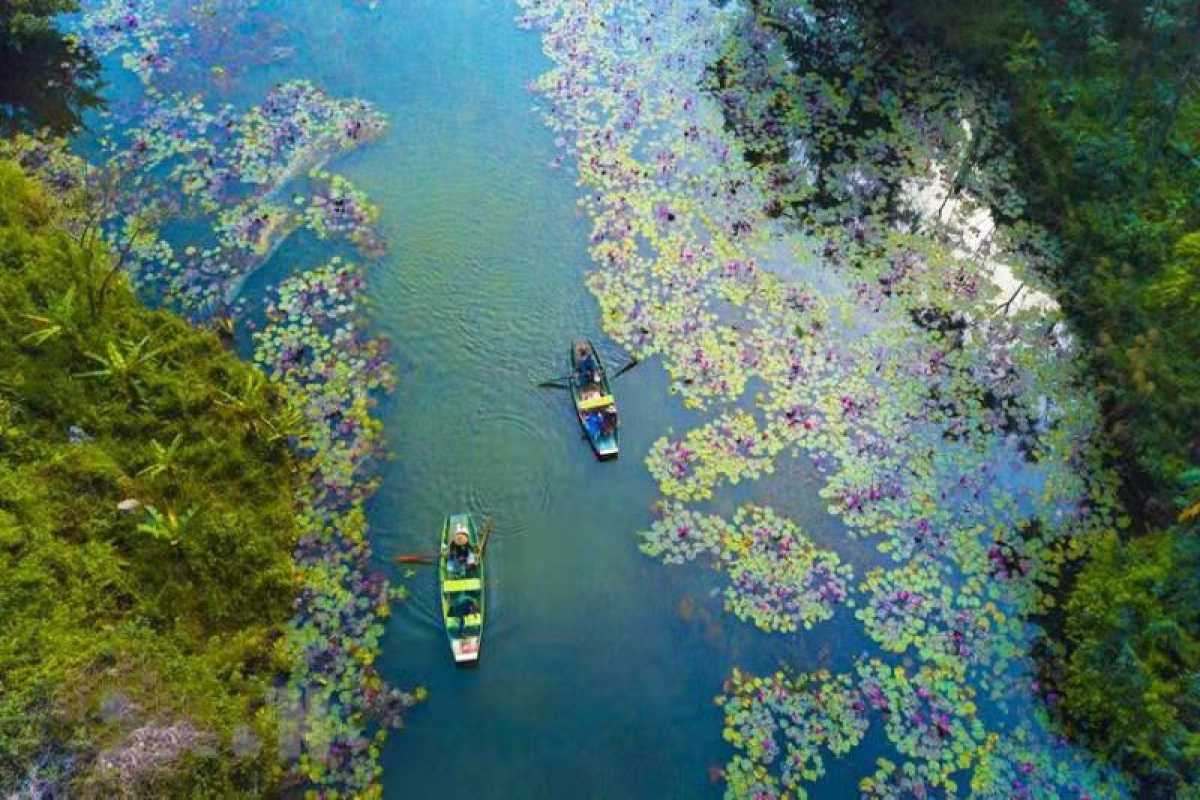
Entry Fees, Ticket Booking, and What’s Included
Understanding the costs and booking options for Thung Nang Ninh Binh ensures you’re prepared and confident before arrival. This section breaks down ticket prices, what’s covered with your purchase, and the best ways to secure your spot on a boat tour. Clear information here helps avoid surprises at the pier and guarantees a smooth start to your visit.
Get the full picture of pricing and booking to enjoy your Thung Nang adventure stress-free.
Up-to-date ticket prices, boat fees, and what’s covered
Tickets for Thung Nang Ninh Binh boat tours are straightforward but vary slightly depending on the season and operator. Here’s the current overview:
- Entry Fee: Approximately 150,000 VND (~$6.50 USD) per person, covering access to the valley and boat docking area.
- Boat Tour Fee: Around 150,000 to 200,000 VND (~$6.50 to $8.50 USD) per boat ride, typically lasting 1.5 to 2 hours. Prices can differ based on the type of boat and group size.
- What’s Included: Tickets generally cover the boat ride through the valley, a local rower or guide sharing insights, and entry to any caves along the route. Some tours may offer optional stops at small temples or rural villages.
- Additional Costs: Food, drinks, and souvenirs are usually not included and available separately.
These prices reflect a good value considering the peaceful, authentic experience offered by Thung Nang compared to busier spots.
Knowing these fees helps you budget accurately for your trip and avoid unexpected expenses.
Booking in advance vs. walk-in: pros, cons, and recommendations
Deciding whether to book your Thung Nang tour in advance or purchase tickets on arrival depends on your travel style and season:
- Booking in Advance:
- Pros: Guarantees your preferred time slot and boat type, especially during peak seasons or holidays.
- Cons: Less flexibility if plans change; some online platforms charge small booking fees.
- Walk-In Tickets:
- Pros: Allows spontaneous travel plans and adjusting timing on the day.
- Cons: Risk of long waits or sold-out boats during busy periods, particularly weekends or holidays.
- Recommendations: For peak tourist months (October to April), booking ahead through trusted providers is advisable. During quieter times, walk-in tickets usually suffice.
Planning your booking approach helps you avoid delays and ensures you can start your Thung Nang Ninh Binh experience without hassle.
Choose the option that best fits your itinerary and travel preferences for a smooth visit.
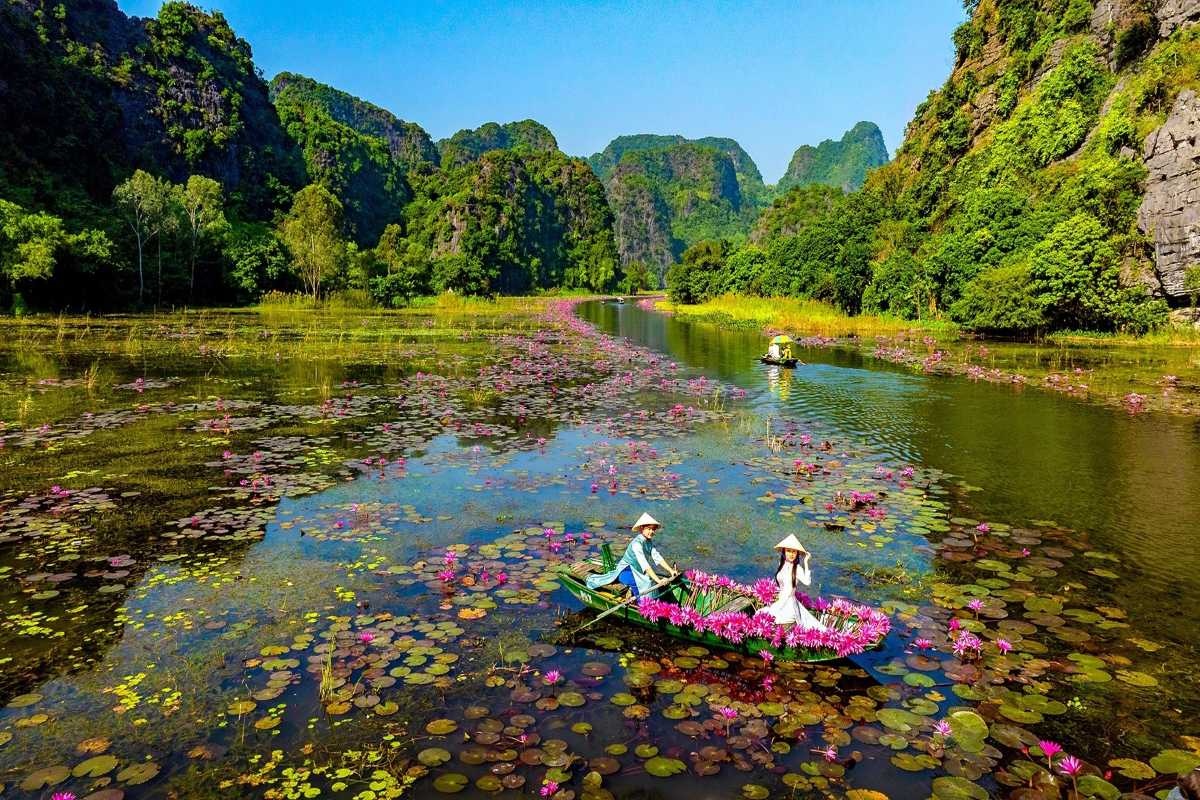
Experiencing Thung Nang – Boat Tours, Routes, and Highlights
Exploring Thung Nang Ninh Binh means stepping into a tranquil world where emerald waters wind quietly between towering limestone cliffs and endless rice fields. Whether you glide along the calm river on a traditional boat, paddle through hidden channels by kayak, or try stand-up paddleboarding, the experience is one of peaceful discovery. The valley’s natural beauty blends effortlessly with the rich cultural heritage of the locals, offering visitors a journey that is as enriching as it is breathtaking. Knowing what to expect and where to go will help you make the most of your time here.
Let yourself be carried by the gentle current and the stories whispered by the valley as you explore this serene corner of Ninh Binh.

What to Expect on a Thung Nang Boat Tour
A boat tour in Thung Nang is much more than a ride—it’s a chance to immerse yourself in a living painting. As your boat slowly drifts along the river, you’re surrounded by soaring limestone karsts draped in lush greenery and mirrored perfectly in the water below. The journey typically lasts about 90 to 120 minutes, offering enough time to soak in the landscape and pause at special spots.
Your rower, often a local who knows every bend and legend, shares stories passed down through generations. These tales enrich the peaceful scene, weaving history, culture, and nature into a tapestry of experience. Along the way, you’ll pass spiritual sites like the ancient Voi Temple, glimpse small rural hamlets untouched by modern bustle, and witness caves where light plays through rock formations creating moments of pure magic.
This gentle boat journey is perfect for travelers who seek calm beauty paired with authentic cultural insight.
Duration, route map, and must-see scenery along the way
The typical boat tour lasts just under two hours, drifting through waterways flanked by limestone cliffs rising like ancient sentinels. You’ll find these highlights impossible to miss:
- Voi Temple: A serene spiritual site nestled near the riverbank, rich in local history and peaceful atmosphere.
- Submerged Shrines: Small shrines emerging from the water, reminders of the valley’s deep-rooted spiritual traditions.
- Majestic Caves: Natural caves that invite quiet exploration, their interiors painted with shafts of sunlight and intricate rock formations.
- Endless Rice Fields: Vibrant green paddies stretch out beside the river, changing hues with the seasons, framing the valley in natural splendor.
These sights unfold slowly and deliberately, allowing you to capture each moment fully.
Stories and traditions shared by local boat rowers
The boat rowers of Thung Nang are storytellers as much as guides. Many come from families who have lived along the river for generations, their lives intertwined with the valley’s rhythms. As you float along, they share legends of ancient spirits said to watch over the land and waters. They recount the cycles of planting and harvest that shape the fields you pass, giving you a glimpse into the enduring harmony between people and nature here.
Their voices carry warmth and pride, inviting you to see beyond the surface—to feel the heartbeat of the valley itself. These tales transform a simple ride into a rich cultural journey, turning scenery into story, and sight into shared experience.
When you listen closely, Thung Nang reveals not just its beauty but its soul.
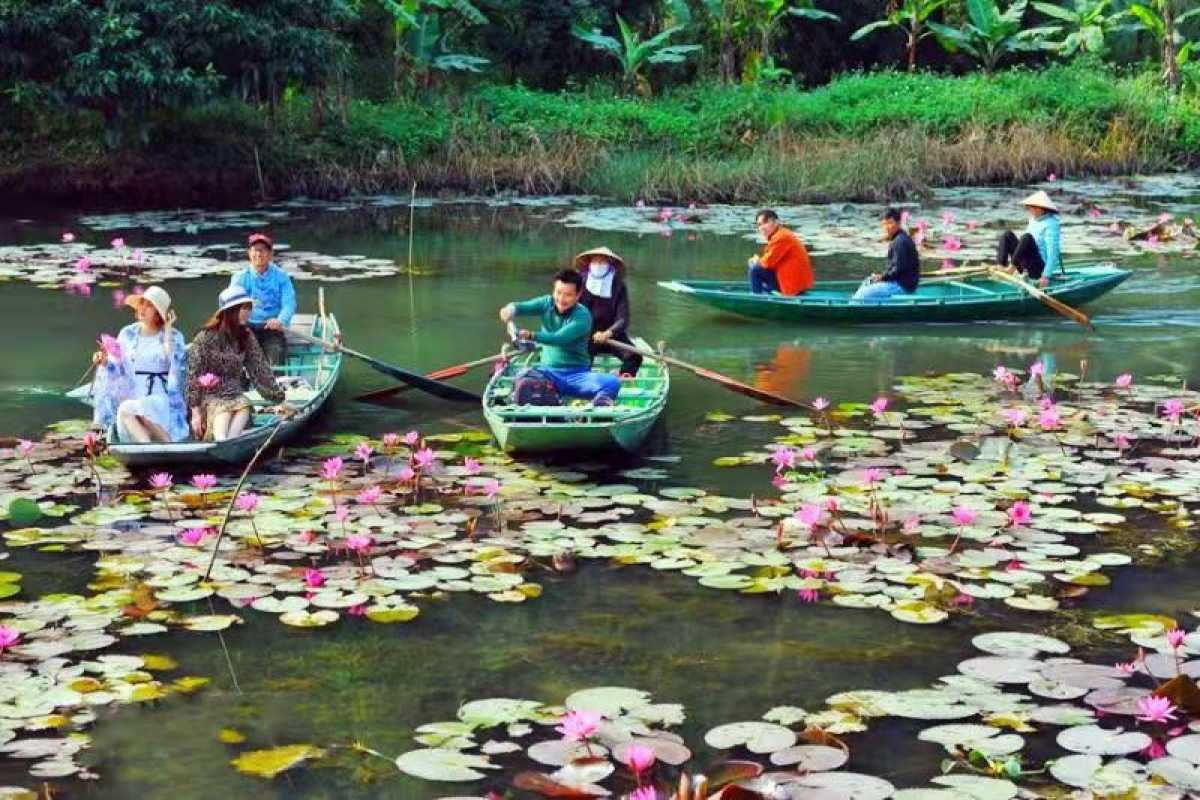
Beyond the Main Boat Tour: Exploring Thung Nang by Kayak or SUP (if available)
For travelers who crave a more hands-on adventure, exploring Thung Nang Ninh Binh by kayak or stand-up paddleboard (SUP) offers an exciting alternative to the traditional boat tour. Paddling through the calm waters gives you freedom to navigate hidden corners, pause at secret spots, and connect deeply with the peaceful environment. Whether you’re an experienced paddler or a curious beginner, these options provide a refreshing way to experience the valley on your own terms.
If you enjoy active exploration and crave a unique perspective, renting a kayak or SUP in Thung Nang lets you chart your own course through this stunning landscape.
Rental options, costs, and specific routes for kayaks/SUPs
When planning a self-guided paddling adventure in Thung Nang Ninh Binh, it’s important to know your rental choices and where to go:
- Rental Availability: Kayak and SUP rentals can be found at several local shops near the Thung Nang boat pier. Prices generally range from 200,000 to 350,000 VND per hour (~$8–$15 USD).
- Equipment Provided: Rentals typically include the kayak or SUP board, paddle, and life jacket. Some places offer guided instruction for beginners.
- Popular Routes: The main waterway is ideal for paddling, but you can also explore quieter tributaries and small caves that larger boats can’t reach.
- Safety Considerations: Calm water conditions prevail most of the year, but always check weather and water levels before heading out. Wearing a life jacket is essential.
Having these details helps you plan a safe, fun, and flexible paddling trip through Thung Nang’s untouched beauty.
Rent your equipment with confidence and pick routes that suit your skill level and sense of adventure.
Benefits of self-exploration vs. guided boat tours
Choosing between a self-guided kayak or SUP trip and a traditional guided boat tour depends on what kind of experience you want:
- Self-Exploration:
- Offers complete freedom to set your own pace and explore hidden nooks.
- Great for active travelers who enjoy physical challenge and solitude.
- Allows closer encounters with wildlife and the natural environment.
- Guided Boat Tour:
- Provides local insights and cultural storytelling from expert rowers.
- Requires less effort, perfect for relaxing and soaking in the scenery.
- Better for those who prefer structured trips and group interaction.
Both experiences showcase the magic of Thung Nang Ninh Binh, but self-guided tours bring a personalized sense of adventure, while guided tours offer depth and ease. Consider your interests, fitness level, and travel style when deciding which path suits you best.
Whichever you choose, exploring Thung Nang by water promises unforgettable memories and a profound connection to nature.
David's Serene Kayaking Moment: Discovering Thung Nang's Hidden Depths
Most visitors to Thung Nang glide through its waterways on the traditional sampan boats, and for good reason – it's a beautiful, relaxing experience. But for me, the true allure lay in something more hands-on, a deeper, more personal communion with the landscape. My recent kayaking adventure in Thung Nang Ninh Binh wasn't just another paddle; it was a profound journey into the valley's quiet heart, revealing hidden spots and an unparalleled tranquility that felt miles away from any other tourist trail. It's an experience that offers a unique perspective, allowing you to truly feel a part of the 'Sun Valley's' natural magic.
Setting the Scene: An Early Morning Whispers
The idea sparked after watching a few independent travelers slip away in kayaks near the main pier, a quiet rebellion against the organized tours. The morning mist still clung to the limestone karsts, softening their jagged edges, and the air was cool, carrying the scent of dewy leaves and damp earth. My expectations were simple: to experience the quiet beauty of Thung Nang at my own pace, to truly feel the water beneath me, rather than just observe it. There was a thrill in the independence, a silent promise of intimate discovery. I rented a kayak from a small, unassuming vendor near the main boat dock – a simple, bright yellow vessel that seemed to hum with the promise of adventure.
The Journey Unfolded: A Symphony of Silence and Discovery
Pushing off from the grassy bank, the only sound was the gentle plop of my paddle entering the water. Unlike the rhythmic creak of the sampan oars, the kayak offered an almost silent glide. This allowed for an incredible intimacy with my surroundings. I paddled slowly, hugging the reedy banks, observing the intricate patterns of sunlight filtering through the dense foliage, dancing on the water's surface.
The freedom to explore was exhilarating. While the sampan boats follow a set route, the kayak allowed me to drift into narrower channels, where the water was so still it perfectly mirrored the towering karsts. It was in one of these smaller offshoots that I stumbled upon a hidden grotto, almost entirely concealed by overgrown vines. Ducking low, I paddled through a narrow opening, emerging into a small, open-air "room" within the rock, bathed in a soft, ethereal light. It felt like my own personal discovery, a secret unveiled.
Another unforgettable moment was when I rounded a bend and came face-to-face with a family of kingfishers, their iridescent blue feathers flashing as they darted over the water, completely undisturbed by my silent presence. I spent a long moment just watching them, feeling utterly connected to the natural world. Later, I spotted a water buffalo grazing peacefully at the water's edge, its dark eyes following me with a calm curiosity. These wildlife sightings were moments of pure magic, made possible by the quiet approach of the kayak. The boat tour might take you to the same general areas, but this level of intimate interaction, the feeling of truly blending in, felt unique to the kayak.
Sensory and Emotional Immersion: A Canvas of Tranquility
The air felt crisper on the water, the sunlight warmer on my skin as the mist burned off. The only sounds were the distant chirping of unseen birds, the rustle of reeds, and the gentle drip of water from my paddle. There was a profound sense of peace, a meditative quiet that washed over me. This wasn't just beautiful scenery; it was an enveloping tranquility that resonated deep within. I felt a surge of joy each time I rounded a bend to a new, breathtaking vista, and a quiet awe when I drifted past ancient, moss-covered temples peeking out from behind the trees. The emotional response was one of pure contentment and a renewed appreciation for untouched natural beauty. This kayaking moment was more than just an activity; it was an experience for the soul.
Unique Insights & Demonstrated Expertise: Paddling into Thung Nang's Soul
Kayaking offers a distinct perspective that elevates the Thung Nang experience. Here’s what I learned that goes beyond the typical boat tour:
- Unrivaled Quietude: Because you're propelling yourself, the absence of engine noise (or even the constant chatter of a larger group) allows you to fully absorb the natural soundscape. This is where you’ll find true tranquility in Thung Nang.
- Access to Hidden Spots: The narrower, shallower draft of a kayak means you can explore nooks and crannies that the larger sampans cannot, revealing truly hidden spots Thung Nang is secretly holding onto.
- A Deeper Connection to Nature: Being at water level, almost eye-to-eye with the reeds and the reflected karsts, fosters a more intimate connection. You feel truly in the landscape, not just observing it.
- Physical Engagement Enhances Appreciation: The gentle effort of paddling adds a layer of satisfaction and makes the beauty feel earned.
Actionable Practical Takeaways:
- Best Time to Go: Early morning (before 8 AM) is ideal for mist, cooler temperatures, and minimal other boats. Late afternoon (after 3 PM) offers beautiful golden light.
- What to Bring: A dry bag (essential for phone/camera!), water bottle, sun hat, sunglasses, sunscreen, and bug spray (especially if you plan to linger in shady spots).
- Rental Specifics: Kayak rentals are usually available near the main Thung Nang boat pier, often from smaller, independent vendors. Prices are typically per hour, and expect to pay around 100,000-150,000 VND per hour. Negotiate politely if you plan for a longer rental.
- Skill Level: Thung Nang's waters are very calm and flat, making it suitable for all skill levels, even beginners.
- Look Out For: Keep an eye out for diverse birdlife and water buffalo along the banks – and always respect their space.
My kayaking trip through Thung Nang was, without a doubt, the highlight of my Ninh Binh adventure. It transformed a beautiful landscape into a deeply personal, meditative experience. The tranquility, the whispered secrets of hidden grottoes, and the fleeting moments with wildlife all combined to create a sense of profound peace and discovery. It reinforced my belief that sometimes, the best way to truly connect with a place is to slow down, put in a little effort, and let the environment reveal itself on its own terms. If you cherish solitude, nature, and the thrill of independent exploration, this is an experience you simply must not miss.
Recommendation:
For those seeking an authentic, tranquil, and uniquely personal way to experience the magic of Thung Nang, I wholeheartedly recommend opting for a kayak. It's an unforgettable journey that promises peace, natural beauty, and the chance to discover the valley's quietest, most enchanting secrets.
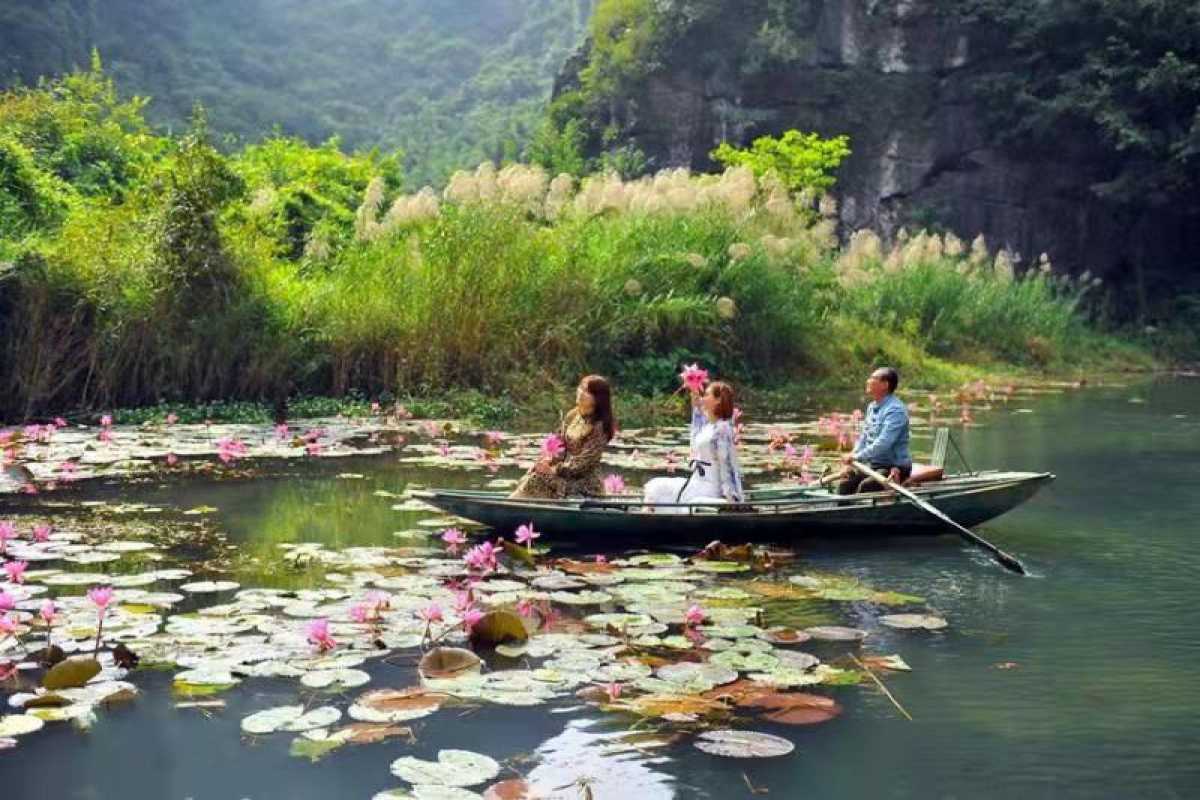
Sights & Stops Along the Journey – Temples, Caves, and More
As you journey through Thung Nang Ninh Binh, the scenery unfolds into a rich tapestry of natural wonders and spiritual sites that enrich the experience. Along the peaceful waterways, you’ll encounter ancient temples, mysterious caves, and submerged shrines that tell stories of the valley’s cultural and religious heritage. Knowing what to look for and why these spots matter adds depth to your exploration, turning a simple boat ride into a meaningful adventure.
Prepare to witness the unique landmarks that give Thung Nang its character and charm, making every stop an opportunity for discovery.
Voi Temple, submerged shrines, and lesser-known spiritual sites (significance, what to observe)
The spiritual sites along the Thung Nang route provide a fascinating glimpse into local beliefs and history. Here’s what to know:
- Voi Temple: A serene, centuries-old temple nestled by the riverbank, dedicated to local deities. Visitors should approach respectfully, observing quiet reverence and traditional customs.
- Submerged Shrines: Small altars partially underwater symbolize the valley’s deep spiritual ties to nature and water. These shrines are often decorated with offerings and are central to local rituals.
- Lesser-Known Sites: Scattered along the river are small, less-visited shrines and statues, offering peaceful spots for reflection and photography.
Respectful observation and silence enhance the experience here, allowing you to connect with the spiritual atmosphere that permeates Thung Nang.
These sacred landmarks enrich your journey with history and cultural significance.
The caves of Thung Nang: what you’ll see and when they’re open (formations, light effects, accessibility)
The caves in Thung Nang are a highlight of the journey, showcasing nature’s artistry and providing moments of quiet wonder:
- Natural Formations: Inside, you’ll find stunning stalactites, stalagmites, and rock formations shaped over millennia, some resembling animals or mythical creatures.
- Light Effects: Sunlight filtering through cave openings creates dramatic plays of light and shadow, especially in the early morning or late afternoon.
- Accessibility: Most caves are accessible by boat during normal water levels and open year-round, though heavy rains may occasionally restrict access for safety. Some caves require brief walks or crouching to enter.
- Visitor Tips: Wear comfortable shoes and bring a flashlight or phone light for darker sections. Respect cave preservation rules by not touching formations or littering.
Exploring these caves offers a natural counterpoint to the valley’s open waterways, revealing hidden depths of Thung Nang’s landscape.
Enjoy the cool, mysterious beauty of the caves as a peaceful interlude on your boat tour.
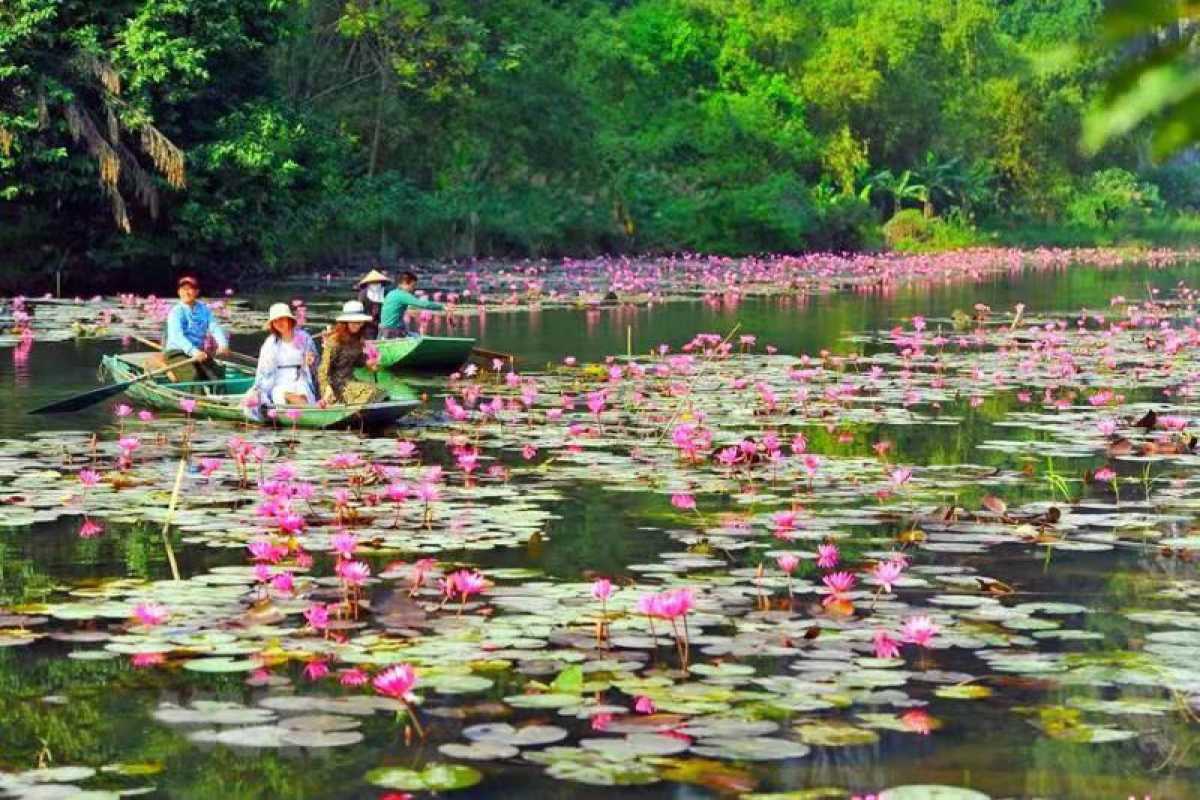
Best Times to Visit for Weather, Scenery, and Rice Fields
Timing your visit to Thung Nang Ninh Binh can transform your experience from ordinary to unforgettable. The valley changes dramatically with the seasons, offering distinct landscapes, comfortable weather, and unique local festivals. Understanding these seasonal shifts helps you choose when to go for the best views of rice fields, weather conditions, and cultural events that bring the valley to life.
Plan your trip to catch Thung Nang at its most vibrant and enjoyable, aligning your visit with the rhythm of nature and local life.
Seasonal changes, local festivals, and tips for timing your trip (green season vs. golden season)
The natural cycle of Thung Nang shapes both its scenery and atmosphere:
- Green Season (May to September): The rice fields turn a lush green, blanketing the valley in vibrant color. This season sees frequent rain, which keeps the landscape fresh but may affect travel plans. Local festivals celebrating planting and harvest happen during this time.
- Golden Season (October to November): The rice fields ripen into a golden carpet, creating iconic photo opportunities. Weather is typically dry and pleasant, making it the most popular time for tourists. The valley feels warm and radiant under clear skies.
- Off-Season (December to April): Cooler months bring milder weather and fewer visitors, offering a quiet, peaceful experience. Some areas may be less accessible due to weather conditions.
Choose your timing based on whether you prefer lush greenery, golden fields, or a quiet atmosphere. Festivals provide cultural insight and festive energy but may attract crowds.
What to pack for different months and weather conditions
Packing smart ensures comfort and readiness for Thung Nang’s seasonal variety:
- Rain Gear: Essential from May through September to stay dry during sudden showers. Pack a lightweight waterproof jacket and quick-dry clothes.
- Sun Protection: Sunglasses, hats, and high-SPF sunscreen are must-haves year-round, especially in the dry season.
- Comfortable Footwear: Waterproof sandals or sturdy shoes for boat boarding and walking along muddy or uneven paths.
- Layered Clothing: Early mornings and evenings can be cool; bring light layers to adjust to temperature changes.
- Camera and Waterproof Bags: Protect your gear while capturing the valley’s stunning views and seasonal transformations.
Being well-prepared means more time enjoying the scenery and less dealing with discomfort.
Average Monthly Temperatures and Rainfall (Table/Graph for quick reference)
Here’s a quick reference to help you plan your visit around the weather in Ninh Binh, including Thung Nang:
- Average Temperature: Ranges from 17°C (63°F) in January to 32°C (90°F) in July.
- Rainfall: Peaks during May to August with heavy showers; driest months are November through April.
- Humidity: Generally high year-round but most manageable during the dry season.
Having this climate overview helps you pack wisely and choose your travel dates for ideal conditions.
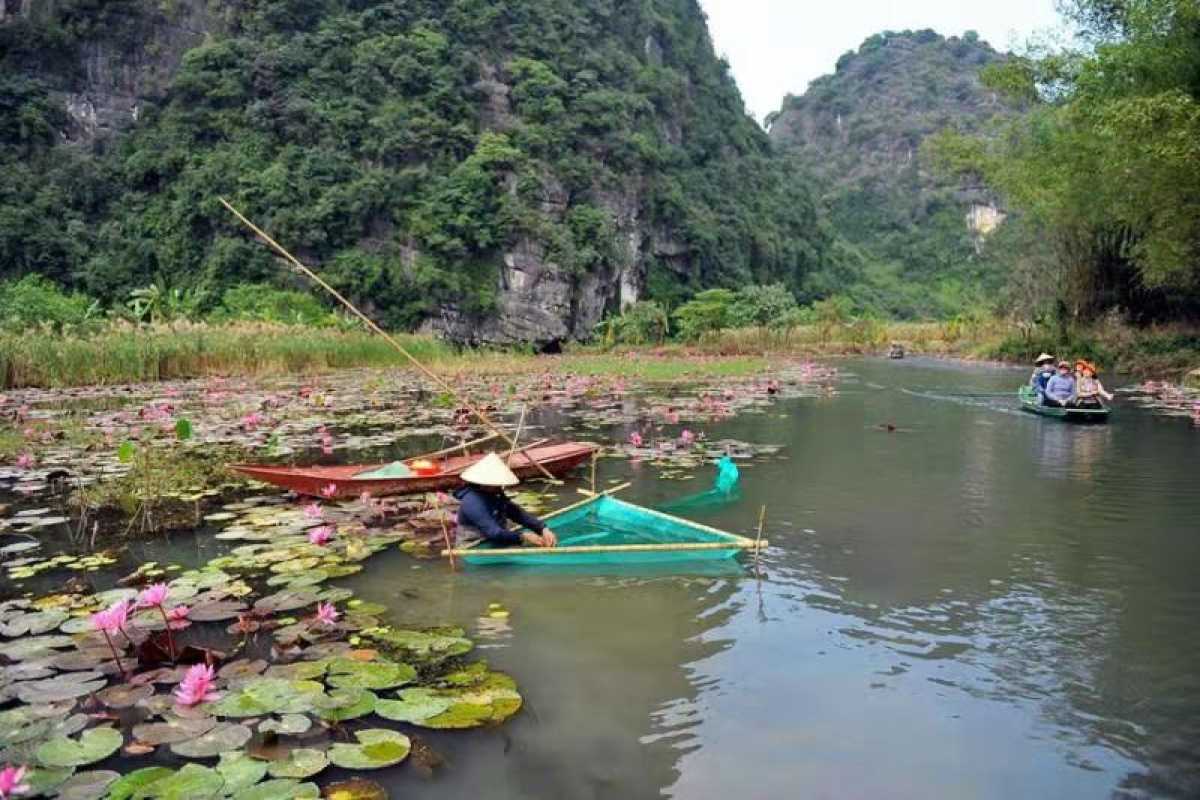
Things to Do Around Thung Nang – Top Activities & Local Adventures
When visiting Thung Nang Ninh Binh, there’s more to explore than just the famous boat ride. The area offers a rich variety of activities that invite you to immerse yourself in the natural beauty and vibrant local culture. Whether you prefer peaceful walks, cycling through scenic trails, or embarking on nearby day trips to iconic sites, you’ll find plenty to fill your days with discovery and adventure. From wildlife watching to joining local festivals, Thung Nang invites curious travelers to engage deeply with its surroundings.
Dive into these top activities and make your visit truly memorable.

Beyond the Boat Ride – Exploring on Foot or By Bike
Exploring Thung Nang on foot or by bicycle lets you connect closely with the landscape and wildlife. The valley’s tranquil paths and gentle terrain make it perfect for active travelers who enjoy moving at their own pace while soaking in the sights.
Several well-marked walking and cycling routes weave through rice paddies, riverside villages, and quiet groves, giving you ample opportunities to spot local birds and other wildlife. These routes provide a fresh perspective and a chance to engage with the peaceful rhythm of rural life.
Whether you’re a casual stroller or an avid cyclist, exploring beyond the boat opens new windows into Thung Nang’s natural charm.
Walking and cycling routes for curious travelers (suggested paths, distances, points of interest)
Planning your self-guided trek or bike ride around Thung Nang? Consider these routes:
- Riverside Loop (5 km): A gentle trail following the water’s edge, ideal for spotting water birds and enjoying panoramic views.
- Village Path (7 km): Winds through local hamlets where you can observe daily life and traditional farming practices.
- Rice Field Circuit (10 km): Perfect for cyclists, this path circles the lush paddies during planting or harvest seasons.
Along these routes, keep an eye out for lotus ponds, small temples, and seasonal crops that paint the landscape with vibrant colors.
These paths offer manageable distances and plenty of sights to keep your adventure varied and rewarding.
Wildlife and birdwatching tips for nature lovers
Nature lovers will find Thung Nang a delight, especially for birdwatching and wildlife observation:
- Early Morning is Best: Many birds are most active at dawn; bring binoculars and a quiet attitude to avoid disturbance.
- Common Sightings: Expect to see kingfishers, herons, egrets, and occasionally water buffalo grazing near the banks.
- Guided Help: Local guides can help spot rare species and explain animal behavior for a richer experience.
- Respect Wildlife: Maintain a safe distance and avoid loud noises to preserve the natural habitat.
Following these tips will enhance your chance to witness the valley’s thriving biodiversity.
Enjoy the quiet company of Thung Nang’s wildlife as part of your outdoor adventure.

Day Trips to Tam Coc, Bich Dong Pagoda, and Trang An
Exploring Thung Nang Ninh Binh gives you a chance to see one part of the region’s charm, but combining your visit with nearby attractions creates a fuller experience. These day trips let you enjoy contrasting landscapes, cultural heritage, and more boat tours, making your trip diverse and rewarding.
Planning your day trips with knowledge of distances, travel times, and key highlights helps you get the most from each destination without feeling rushed.
Distances, highlights, and why you should (or shouldn’t) combine them
When considering day trips from Thung Nang, here are some practical points:
- Tam Coc is about 10 kilometers away and features stunning limestone karsts and rice paddies. It offers boat rides similar to Thung Nang but is busier and more touristy.
- Bich Dong Pagoda, located near Tam Coc, provides a spiritual and historical experience with its ancient temples built into the mountainside. It’s perfect for a cultural pause.
- Trang An, around 12 kilometers away, offers a larger boat tour circuit with caves, temples, and peaceful nature, ideal for those seeking a more extensive exploration.
Combining these destinations can make for a full, enriching day or a relaxed two-day itinerary depending on your pace. If you prefer tranquility, pairing Thung Nang with either Bich Dong Pagoda or Trang An might suit you better than adding Tam Coc with its crowds.
Sample one-day and two-day itineraries for every style (e.g., "Nature Lover," "Cultural Explorer")
Here are some tailored itineraries based on different traveler interests:
- Nature Lover Itinerary: Morning boat tour in Thung Nang, afternoon cycling around the valley, then visit the peaceful caves of Trang An the next day.
- Cultural Explorer Itinerary: Start with Bich Dong Pagoda to absorb local spiritual history, followed by a boat ride in Thung Nang, and end with a temple visit in Trang An.
- Leisurely Two-Day Plan: Day one includes a relaxing boat ride and photography in Thung Nang; day two is dedicated to exploring Tam Coc with its lively markets and restaurants.
These itineraries balance activity and relaxation while showcasing the region’s rich variety. Tailor them to your interests and travel style for a fulfilling experience.

Seasonal & Special Events in the Thung Nang Area
Visiting Thung Nang Ninh Binh at the right time can transform your trip from ordinary to unforgettable. The area comes alive with vibrant local festivals and seasonal celebrations that offer rich cultural insights and lively experiences. These events showcase traditional music, dance, and rituals that connect visitors to the heritage and community spirit of the region.
Knowing when these festivals happen helps you plan your visit to align with authentic local celebrations and unique seasonal moments.
Local festivals, temple celebrations, and when they happen
Throughout the year, Thung Nang and the wider Ninh Binh province host a variety of cultural festivals worth timing your visit for:
- Trang An Festival (March-April): Celebrates the region’s cultural heritage with boat processions, traditional music, and ritual offerings at local temples.
- Dinh Bang Festival (April): Takes place in nearby villages with folk games, dances, and ceremonies honoring local deities.
- Bich Dong Pagoda Festival (February): A temple celebration featuring spiritual rituals and vibrant community activities.
- Harvest Festivals (September-October): Mark the rice harvest season with ceremonies and communal gatherings reflecting rural life rhythms.
Attending these festivals offers a rare chance to witness living traditions that enrich the visit beyond the natural beauty.
Unique experiences available only at certain times of year
Some moments in Thung Nang Ninh Binh are fleeting and tied to seasonal changes or special events:
- Golden Rice Fields in late September and October create breathtaking landscapes of ripening paddies, ideal for photography and quiet reflection.
- Early Spring Blossoms paint the valley in delicate colors, coinciding with Tet (Lunar New Year) festivities nearby.
- Monsoon Light Effects on the limestone cliffs add drama to boat tours, transforming the scenery with mist and rainbows.
- Traditional Boat Racing sometimes takes place during festival periods, offering exciting displays of local sportsmanship.
Planning your trip around these seasonal highlights lets you experience Thung Nang at its most magical and authentic.

Accommodation Near Thung Nang: Where to Stay for Every Budget
Finding the right place to stay near Thung Nang can greatly enhance your visit. Whether you’re looking for a cozy homestay, a comfortable hotel, or a luxurious resort, the Ninh Binh area offers options for every traveler and budget. This guide helps you understand what each accommodation type offers so you can choose the perfect fit for your trip.
Consider your preferences for comfort, location, and amenities to make your stay both convenient and memorable. From authentic local experiences to modern comforts, there’s something for everyone near Thung Nang.
End your day refreshed and ready to explore more of Thung Nang Ninh Binh by choosing accommodation that suits your style and budget.
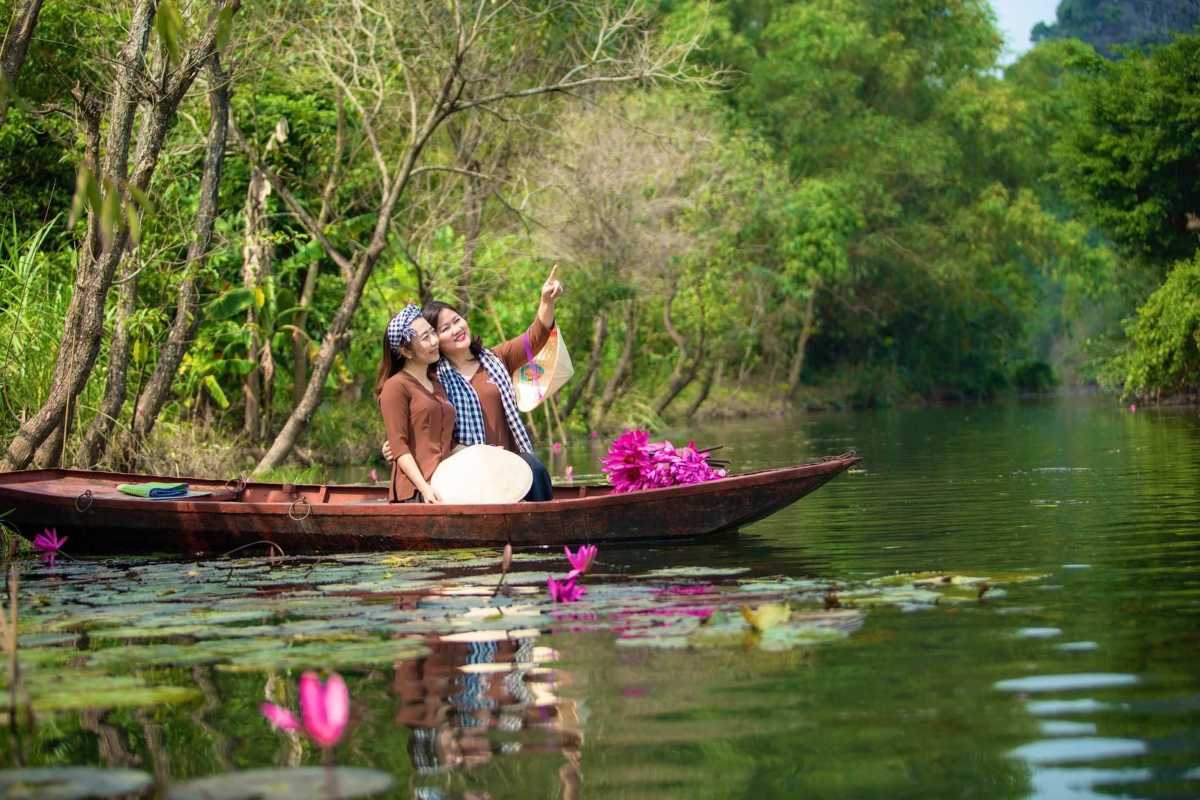
Types of Accommodation (Homestays, Hotels, Resorts)
Travelers to Thung Nang Ninh Binh can choose among several accommodation categories, each offering distinct experiences. Homestays provide a chance to live like a local, enjoying warm hospitality and cultural immersion. Hotels offer a balance of comfort and convenience, often situated near key attractions. For those seeking luxury, resorts in the area feature upscale amenities and tranquil settings for relaxation.
Knowing what to expect from each type helps you pick lodging that fits your travel needs and enhances your visit.
Whichever type you choose, the region’s hospitality ensures a welcoming stay.
What to expect from each category in Ninh Binh
Understanding the features and services of homestays, hotels, and resorts in Ninh Binh helps you tailor your stay:
- Homestays: Authentic local hospitality, simple but cozy rooms, home-cooked meals, direct interaction with host families, prices usually on the budget-friendly side.
- Hotels: More standardized rooms with private bathrooms, Wi-Fi, and on-site facilities like restaurants or laundry. Mid-range to upper-mid-range prices common.
- Resorts: Spacious rooms or villas, swimming pools, wellness services, often scenic views, and higher price points for luxury travelers.
Each category caters to different traveler preferences, so choose based on your comfort needs and budget.
This insight prepares you for a stay that matches your expectations near Thung Nang.
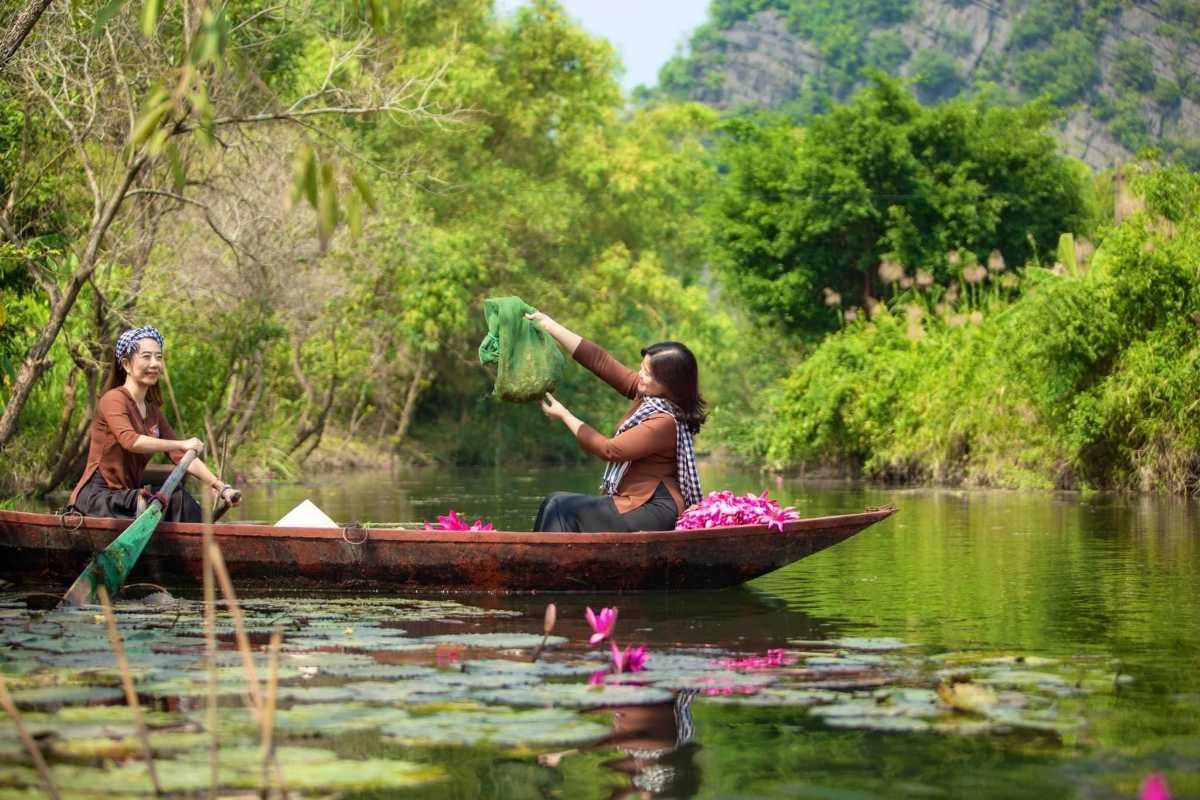
Best Areas to Stay (Near Thung Nang, Tam Coc, Ninh Binh City)
Choosing where to stay near Thung Nang depends on your travel style and priorities. Each area offers a distinct atmosphere and advantages, so understanding these can help you pick lodging that suits your preferences and enhances your visit.
Whether you prefer the peaceful rural setting close to Thung Nang, the lively tourist hub of Tam Coc, or the urban convenience of Ninh Binh City, knowing the pros and cons of each location will guide your decision for a comfortable and enjoyable trip.
Think about what kind of experience you want—quiet nature, local culture, or city amenities—to find the best base for your adventures around Thung Nang.
Pros and cons of each location based on traveler preferences
Here is a balanced look at what each area offers and where it might fall short, helping you decide where to stay near Thung Nang:
- Near Thung Nang
- Pros: Close to nature and boat tours, peaceful and less crowded, authentic rural experience.
- Cons: Limited dining and shopping options, fewer accommodations, more reliance on local transport.
- Tam Coc
- Pros: Vibrant tourist area with many restaurants, shops, and tour services, good transport connections.
- Cons: Can be busy during peak seasons, less tranquil than Thung Nang.
- Ninh Binh City
- Pros: Urban conveniences including supermarkets, restaurants, and transportation hubs, wider range of hotels.
- Cons: Farther from Thung Nang and natural attractions, less scenic surroundings.
Choosing between these depends on your travel goals—whether you seek calm nature immersion, lively tourism hubs, or urban comfort.

Budget-Friendly to Luxury Options
Finding the right place to stay near Thung Nang means knowing your options across all budgets. Whether you’re traveling on a tight budget or looking for a more upscale experience, Ninh Binh offers a variety of accommodations to suit every traveler’s needs. From cozy homestays where you can enjoy local hospitality to luxury resorts with modern amenities, you’ll find a comfortable base for your adventure.
Understanding price ranges and what each category offers can help you plan better and book the perfect lodging for your stay.
Specific examples of accommodation types/price ranges
To help you get started, here are some real examples of accommodation near Thung Nang with approximate price ranges:
- Budget Homestays: Comfortable rooms with basic amenities, often family-run, prices typically range from $10 to $25 per night. Great for travelers looking for authenticity and affordability.
- Mid-Range Hotels: Offer more facilities like Wi-Fi, breakfast, and private bathrooms, with prices around $30 to $60 per night. Ideal for those wanting convenience without breaking the bank.
- Luxury Resorts: Full-service resorts with swimming pools, spas, and upscale dining, ranging from $70 to $150+ per night. Perfect for travelers seeking relaxation and extra comfort.
These options provide a good balance between price and experience, ensuring every visitor can find a stay that fits their needs and budget.
Sophia's Cozy Homestay Find: A Heartfelt Welcome Near Thung Nang
Finding the right place to stay can make or break a trip, especially when you're looking for something beyond the typical hotel experience. When planning my visit to Thung Nang Ninh Binh, I wasn't just searching for accommodation near Thung Nang; I was hoping for a glimpse into local life, a genuine connection. My recent stay at a charming homestay in a quiet village just a short scooter ride from Thung Nang not only provided a wonderfully comfortable base but offered an authentic, heartwarming immersion into Vietnamese culture that no resort could ever replicate. It truly felt like finding a second home.
Setting the Scene: Beyond the Booking Confirmation
After a long journey, the thought of navigating another bustling city center to find a sterile hotel room felt unappealing. I had scoured online reviews, filtering specifically for "homestay" near Ninh Binh, hoping to avoid the tourist traps of Tam Coc and find a more peaceful, local vibe. My chosen spot, tucked away down a narrow lane surrounded by lush rice paddies, promised tranquility. As I pulled up, the sight of a vibrant bougainvillea spilling over the gate, and a woman with the kindest smile waving me in, immediately put me at ease. My expectation wasn't just a bed for the night, but a genuine interaction, and from that first wave, I knew I was in the right place.
The Journey Unfolded: A Home Away From Home
The homestay itself was a simple, traditional Vietnamese house, meticulously clean and filled with natural light. My room was cozy, with a comfortable bed, a strong fan (crucial in the humid weather!), and a small balcony overlooking a tranquil fishpond. But what truly defined the experience was the family, especially Ms. Hoa, the owner. From the moment I arrived, her host hospitality was exceptional. She greeted me with a refreshing glass of fresh lime juice and a warm, inviting smile, immediately making me feel like a cherished guest, not just a customer.
Every evening, Ms. Hoa would personally cook dinner, an incredible spread of authentic Vietnamese dishes, far more delicious and nuanced than anything I found in tourist restaurants. One night, after a particularly captivating boat tour in Thung Nang, she taught me how to roll fresh spring rolls – a delightful, hands-on experience filled with laughter and broken English. She patiently guided my clumsy attempts, sharing stories of her family and traditions. These weren't just meals; they were communal gatherings, often joined by other travelers, fostering a wonderful sense of camaraderie.
Ms. Hoa also offered invaluable local insights. She advised me on the best time to visit Thung Nang to avoid the crowds (early morning!), suggested a scenic cycling route through nearby villages that wasn't on any map, and even helped me arrange a local scooter rental from a trusted neighbor, ensuring I got a fair price. Her recommendations were always spot-on, leading me to authentic experiences and saving me from potential tourist pitfalls. The level of comfort wasn't just about the physical space, but the comfort of knowing I had a reliable, caring local guide. I never felt lost or unsure because I had her wisdom to rely on.
Sensory and Emotional Immersion: The Scent of Home, The Warmth of Connection
My senses were constantly engaged. The aroma of freshly cooked ginger and lemongrass wafting from the kitchen, the gentle rustle of bamboo outside my window, the rhythmic sound of a distant rice threshing machine – these sounds became the soundtrack of my stay. Emotionally, I felt a deep sense of belonging and peace. The initial apprehension of being a solo female traveler in a new country melted away, replaced by a profound feeling of safety and welcome. There was joy in the shared meals, curiosity in learning about local customs, and immense gratitude for Ms. Hoa's genuine warmth. This wasn't just a place to sleep; it was a vibrant, living experience that enriched my entire trip.
Unique Insights & Demonstrated Expertise: Why a Homestay is a Game-Changer
My Sophia's homestay review isn't just about this one place; it's about the transformative power of choosing a homestay for your travels in Vietnam, especially when exploring areas like Thung Nang.
- Beyond Accommodation, It's an Immersion: You don't just sleep there; you live a slice of local life. You share meals, learn customs, and interact with families in a way hotels simply can't offer.
- Unbeatable Local Insights: Hosts are often treasure troves of information on hidden gems, best times to visit, reliable transport, and authentic experiences. Their advice is invaluable.
- Genuine Connection & E-E-A-T: Staying with a family dramatically boosts the "Experience" and "Trustworthiness" aspects of your trip. You're getting direct, unfiltered exposure to the local culture.
- Support Local Economy Directly: Your money directly benefits local families and communities.
Actionable Practical Takeaways:
- How to Choose: Look for homestays with strong reviews mentioning "hospitality," "family meals," and "local tips." Check location carefully; some are rural but offer free bike rentals.
- Communication: Even with a language barrier, a smile, a translation app, and patience go a long way. Many hosts have a basic grasp of English.
- What to Expect: Simple, clean rooms are common. Air conditioning might not be in every room, but fans are standard. Shared bathrooms are possible, but many now offer private.
- Embrace the Experience: Be open to trying local food, participating in activities (like cooking classes), and engaging in conversation. This is where the magic happens!
- Benefits for Thung Nang Visitors: Staying in a homestay nearby (e.g., in Tam Coc or surrounding villages) allows for easy scooter access to Thung Nang while offering a peaceful retreat after your day of exploration.
Leaving Ms. Hoa's homestay felt like saying goodbye to family. It wasn't just the comfortable bed or the delicious food, but the genuine care and personal connection that made my stay so special. This wasn't merely a place to rest my head; it was a vibrant hub of warmth, laughter, and authentic Vietnamese life that profoundly enriched my visit to Ninh Binh and Thung Nang. If you're looking to do more than just see the sights, if you want to truly feel the heartbeat of a place, a homestay is the answer. It’s an experience that stays with you long after you've left.
Recommendation:
For travelers visiting Thung Nang Ninh Binh who desire an authentic, enriching, and deeply personal stay, I wholeheartedly recommend choosing a local homestay. It's the best way to gain local insights, experience genuine Vietnamese hospitality, and find unparalleled comfort and connection that will transform your trip into an unforgettable journey.

What to Eat & Drink Near Thung Nang: A Local Food Guide
Discovering the vibrant local food near Thung Nang is an essential part of your journey through Ninh Binh. This region offers a delightful mix of traditional flavors and unique dishes that reflect its rich cultural heritage. From savory specialties to refreshing drinks, the food scene near Thung Nang invites you to savor authentic tastes while enjoying the scenic surroundings. Whether you're dining at rustic local eateries or cozy cafes, every bite connects you with the heart of Vietnamese cuisine.
Enjoy exploring these local flavors and enhance your visit with unforgettable meals that tell the story of Ninh Binh.
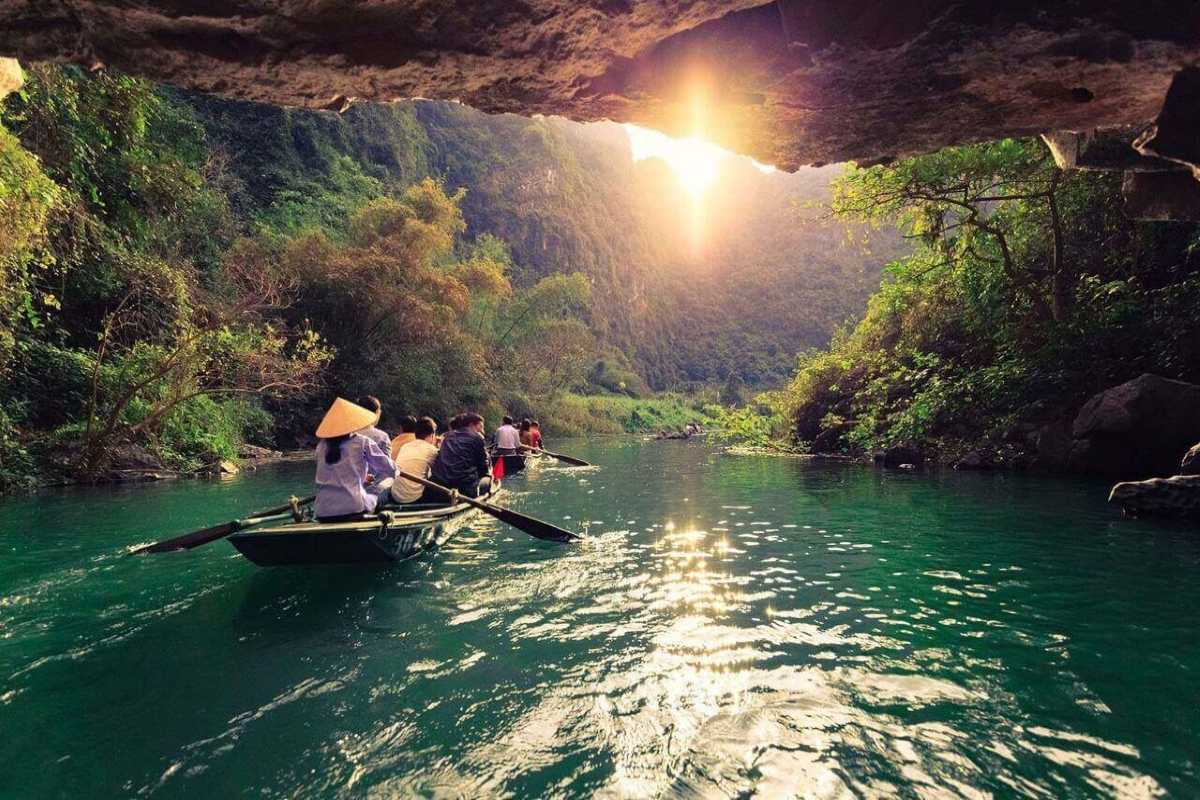
Must-Try Local Delicacies of Ninh Binh
When visiting Thung Nang, indulging in the local food is a must. The food near Thung Nang offers a unique taste of Ninh Binh’s culinary traditions, with dishes that showcase the region’s fresh ingredients and distinctive cooking styles. From crispy com chay to tender de nui, these specialties invite you to explore flavors that have been perfected over generations.
Sampling these dishes gives you a genuine connection to the local culture and an unforgettable sensory experience.
Descriptions of iconic dishes (e.g., com chay, de nui, mien luon)
Exploring the flavors of Ninh Binh means trying its iconic dishes. Com chay, a crispy rice cake often served with savory accompaniments, offers a satisfying crunch and delicate taste. The de nui dish features tender mountain goat meat, slow-cooked with local herbs, delivering a rich and hearty flavor. Another favorite is mien luon, a clear noodle soup made from eel, known for its light yet flavorful broth and fresh ingredients.
Each dish reflects the land and lifestyle of Ninh Binh, inviting you to savor authentic recipes passed down through generations.
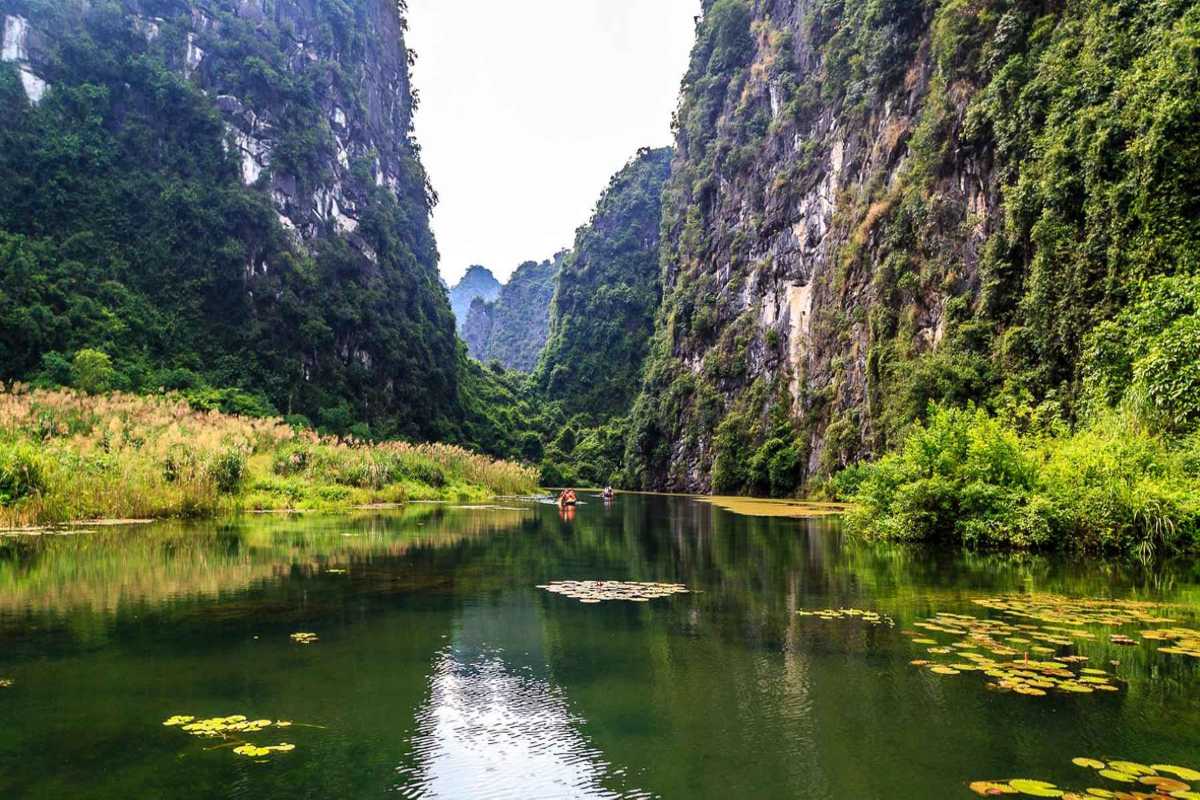
Recommended Restaurants & Eateries Near Thung Nang
When you’re near Thung Nang, discovering the best places to eat adds an important layer to your experience. The food near Thung Nang offers a variety of dining options that range from traditional Vietnamese eateries to cozy cafes, each providing authentic flavors and welcoming atmospheres. Whether you’re craving local specialties or light refreshments, these spots deliver quality and value, helping you plan your meals with confidence and ease.
Explore the local dining scene to enjoy memorable meals that complement your visit to Thung Nang.
Specific restaurant suggestions with brief descriptions and price indications
If you’re planning where to eat near Thung Nang, here are some trusted options that offer a range of tastes and budgets. Each restaurant listed provides a unique ambiance and menu focused on local flavors or popular Vietnamese dishes. Prices are generally affordable, making these spots perfect for both casual and more relaxed dining.
- Ninh Binh Family Restaurant: Traditional Vietnamese dishes served in a cozy setting. Prices range from $3 to $7 per meal.
- Tam Coc Riverside Cafe: Perfect for light meals and drinks with beautiful river views. Expect to pay around $2 to $5 for refreshments.
- Bich Dong Eatery: Local cuisine with specialties like goat meat and rice cakes, priced between $4 and $8.
- Hoa Lu Local Kitchen: Offers authentic dishes with a focus on fresh ingredients, meals typically cost $3 to $6.
These restaurants offer authentic dining experiences that enhance your visit to Thung Nang with delightful meals and welcoming hospitality.

Cafes and Refreshment Spots
When exploring Thung Nang, finding the perfect place to relax and enjoy a cup of coffee or a refreshing local drink adds to the charm of your visit. The food near Thung Nang isn’t just about meals; it includes cozy cafes and vibrant refreshment spots where you can experience traditional Vietnamese flavors in a casual setting. From aromatic coffee shops to inviting tea houses, these spots offer a delightful break to recharge and soak in the local atmosphere.
Enjoying a drink at one of these local cafes is a great way to unwind and connect with the culture of Ninh Binh.
Suggestions for local cafes and popular Vietnamese drinks
If you’re looking for a place to sip a drink near Thung Nang, here are some standout cafes and refreshment spots worth visiting. Each offers a unique take on traditional Vietnamese beverages, perfect for cooling off or enjoying a peaceful pause during your adventure.
- Green Leaf Cafe: Known for its robust Vietnamese drip coffee and relaxing garden setting.
- Lemon Tea House: Offers a variety of herbal teas and fresh fruit juices, ideal for a refreshing break.
- Mountain View Cafe: Combines great coffee with scenic views of the surrounding landscape.
- Traditional Drink Stalls: Try local favorites like sugarcane juice, lotus tea, or iced jasmine tea from nearby street vendors.
These spots give you a true taste of Ninh Binh’s drink culture and a chance to savor authentic flavors in comfortable surroundings.
Liam's Goat Meat Feast Adventure: A Taste of Ninh Binh's Soul
You can't truly know a place until you've tasted its heart, and in Ninh Binh, that heart often comes in the form of de nui, or mountain goat. While planning my explorations around Thung Nang Ninh Binh, I'd seen "goat meat" pop up on every recommended food list, often with a mix of intrigue and slight apprehension. My journey into Food near Thung Nang wasn't just about satisfying hunger; it was about a full-sensory dive into the local culture, culminating in a culinary adventure that became one of the most memorable parts of my trip, challenging my taste buds and deeply immersing me in the region’s unique gastronomic identity.
Setting the Scene: The Call of the Wild (Goat)
My senses were already alive from a day of exploring Thung Nang's peaceful waterways. The humid air, fragrant with the scent of damp earth and distant cooking, stirred an appetite. As evening approached, the aromas intensified around Tam Coc, drawing me towards the cluster of eateries where locals gathered. Every other restaurant proudly displayed signs advertising de nui. My initial reaction was a mix of curiosity and a touch of hesitation. Goat meat wasn't a staple in my diet back home, and the idea of "mountain goat" conjured images of something tough or gamey. However, the sheer ubiquity of it, coupled with the enthusiastic gestures of local diners, told me this was something I absolutely had to try. I was ready to step out of my comfort zone and truly embrace the local cuisine of Ninh Binh.
The Journey Unfolded: From Apprehension to Appetite
I chose a bustling, open-air restaurant, drawn in by the sizzle of woks and the joyful chatter of families. With a determined breath, I pointed to "Dê Tái Chanh" on the menu, a raw goat salad cured with lime – a bold first choice, I know! The owner, a jovial man with a twinkle in his eye, nodded approvingly, clearly pleased I was venturing beyond fried rice.
The dish arrived quickly, a vibrant mosaic of thinly sliced goat meat, bright green lime leaves, crunchy roasted peanuts, fragrant herbs, and slivers of starfruit and green banana. My initial reactions were a fascinating mix: the texture of the raw meat was surprisingly tender, almost like a very lean carpaccio. The first bite was an explosion of flavors. The sourness of the lime hit first, quickly followed by the distinct, slightly earthy taste of the goat, balanced by the aromatic herbs and the nutty crunch of the peanuts. It was nothing like the gamey toughness I'd feared. This was fresh, vibrant, and incredibly complex.
Over the next few days, de nui became my mission. I tried de nuong (grilled goat), the smoky char bringing out a deeper richness in the meat, served with a pungent fermented bean sauce that was unexpectedly addictive. Then came nồi lẩu dê (goat hotpot), bubbling with tender chunks of meat and vegetables, warming me from the inside out after a long day of cycling. Each dish offered a different sensory experience, from the delicate chew of the lime-cured salad to the satisfying heartiness of the hotpot. I noticed how the locals ate it – often with small sheets of rice paper, wrapping the meat with herbs and dipping it into various sauces. Mimicking their technique added another layer to my cultural immersion. The hotpot, in particular, was a communal affair, fostering a sense of warmth and shared experience even with strangers.
Sensory and Emotional Immersion: The Unforgettable Flavors of Ninh Binh
The sensory details of this goat meat adventure are deeply etched in my memory. The initial pungent, inviting aroma of the grilling meat, the satisfying sizzle as it hit the hot coals, the freshness of the accompanying herbs that cleansed the palate, the rich, savory broth of the hotpot – each element contributed to a truly immersive feast. Emotionally, I moved from initial hesitation to utter delight and satisfaction. There was a sense of triumph each time I tried a new goat dish and found myself thoroughly enjoying it. It was a joyful discovery, a realization that pushing culinary boundaries could lead to such rich rewards. This wasn't just eating; it was a deeply personal connection to the region's heritage, a true Liam’s goat meat feast adventure.
Unique Insights & Demonstrated Expertise: Decoding the De Nui Experience
Trying Ninh Binh's de nui is more than just a meal; it's a rite of passage. Here’s what my experience taught me about this local delicacy:
- It's Not "Gamey" as You Might Think: Unlike goat meat from other regions, Ninh Binh's mountain goat is famously lean and tender, often described as having a unique, almost beef-like flavor but with its own distinct character. Don't let preconceived notions deter you!
- Variety is Key: Don't just try one dish. Each preparation (lime-cured, grilled, hotpot, steamed with ginger) highlights different aspects of the meat and offers a unique culinary experience.
- The Sauce Matters: The accompanying dipping sauces, particularly the fermented bean paste (tuong ban), are crucial. They cut through the richness and add layers of umami and pungency.
- Follow the Locals: If you see a restaurant bustling with Vietnamese diners, that’s your sign. They know where the best de nui is.
Actionable Practical Takeaways:
- Where to Find It: Most restaurants in Tam Coc and Ninh Binh City will serve de nui. Look for "Dê Núi Ninh Bình" signs.
- Recommended Dishes to Try:
- Dê Tái Chanh (lime-cured goat salad) for a fresh, zesty start.
- Dê Nướng (grilled goat) for smoky, rich flavors.
- Nồi Lẩu Dê (goat hotpot) for a communal, warming experience.
- Don't Be Afraid to Ask: If unsure, point to a dish someone else is eating or ask the waiter for a recommendation.
- Pairing: Local beer (like Bia Hanoi or Bia Saigon) or a refreshing fresh juice (like nước mía – sugarcane juice) pair wonderfully.
- Cost: Goat meat dishes are typically more expensive than standard Vietnamese fare but offer excellent value for the quality and experience. Expect to pay 100,000-250,000 VND per dish, depending on size and preparation.
My Liam’s goat meat feast adventure was more than just filling my stomach; it was a deep dive into the culinary soul of Ninh Binh. It was about overcoming initial apprehension, embracing the unknown, and finding immense joy in the vibrant flavors and shared experiences. This was where my journey transcended mere sightseeing and became truly experiential. If you’re visiting Ninh Binh, don’t just observe; taste, savor, and immerse yourself in the flavors that define this incredible region. It's an unforgettable part of the travel experience.
Recommendation:
For any traveler exploring Thung Nang Ninh Binh and its surroundings, trying the local de nui is an absolute must. It’s a delicious and deeply rewarding way to engage with the region’s local cuisine and enhance your cultural immersion. Be brave, be adventurous, and prepare for a feast that will linger in your memories long after your trip.

Practical Travel Tips for a Smooth and Memorable Visit
Traveling to Thung Nang can be a rewarding experience, especially when you're well-prepared. Knowing what to bring, understanding local customs, and being aware of safety considerations will help you enjoy your trip without unnecessary stress. These practical travel tips for Thung Nang are designed to make your journey comfortable, respectful, and smooth from start to finish.
Prepare well, respect the local culture, and stay safe to make the most of your visit to this beautiful part of Ninh Binh.

What to Bring for Your Thung Nang Adventure
Heading out to explore Thung Nang means packing smartly for a variety of outdoor activities and weather conditions. Having the right gear ensures you stay comfortable and protected throughout your visit. This list focuses on essentials tailored to Thung Nang’s climate and typical excursions, helping you avoid forgetting important items and making your adventure more enjoyable.
By packing thoughtfully, you’ll be ready for every moment—from boat rides to walking trails—without hassle.
Packing checklist: sun protection, snacks, cameras, and essentials (specific items, quantities)
Before you set off, make sure you have the following essentials to fully enjoy Thung Nang:
- Sun protection: Bring sunscreen, a wide-brimmed hat, and sunglasses to shield yourself from strong sun rays.
- Comfortable footwear: Lightweight walking shoes or sandals suited for boat rides and trails.
- Snacks and water: Pack light snacks and plenty of water to stay energized, especially during long boat tours.
- Camera or smartphone: Capture the stunning scenery and memorable moments with a reliable device.
- Rain gear: A compact raincoat or poncho, particularly if visiting during the green season.
- Light layers: Temperatures can vary; bring a light jacket or sweater for cooler evenings.
- Cash: Small denominations for entry fees, tips, or local purchases as many places may not accept cards.
Packing these items helps you stay comfortable, safe, and prepared for all the experiences Thung Nang offers.

Essential Local Etiquette and Cultural Sensitivities
Understanding and respecting the local culture in Thung Nang enriches your visit and ensures positive interactions with residents. Knowing the cultural norms and sensitivities can help you navigate social situations gracefully and avoid unintended offenses. This section introduces key etiquette points that every traveler should be aware of when visiting Thung Nang and the wider Vietnam region.
Respectful behavior and cultural awareness open doors to authentic experiences and genuine connections.
Temple etiquette (dress code, offerings, behavior)
Temples in Thung Nang are sacred spaces that deserve reverence. Observing proper etiquette shows respect for local beliefs and traditions. Here are important guidelines to keep in mind when visiting:
- Dress modestly: Wear clothing that covers shoulders and knees to show respect for the sacred environment.
- Offerings: If you wish to make offerings, use incense sticks or flowers as locals do, and avoid inappropriate or excessive gestures.
- Behavior: Speak softly, avoid loud noises or disruptive behavior, and do not climb on temple structures or statues.
- Photography: Always check for signs about photography restrictions and ask permission if unsure, especially inside temples.
- Remove hats and shoes: When entering certain temple areas, follow local customs by removing hats and footwear.
By following these guidelines, you’ll honor the spiritual atmosphere and local customs while enjoying a meaningful visit.
Interacting with locals, bargaining, and photography considerations
Positive interactions with locals can greatly enhance your Thung Nang experience. Being mindful of cultural nuances and social customs helps build goodwill and avoid misunderstandings. Here are practical tips to guide you:
- Greetings and respect: Use polite greetings like a gentle nod or a slight bow. Avoid overly familiar gestures until you understand local norms.
- Bargaining: Negotiation is common in markets and with vendors. Always remain friendly, patient, and fair. Avoid aggressive haggling that can offend.
- Photography etiquette: Ask for permission before photographing individuals, especially elders or in private settings. Respect any refusals gracefully.
- Personal space and behavior: Be aware of local customs regarding personal space, especially in rural areas. Avoid touching heads or pointing feet towards people.
- Listening and learning: Show interest in local stories and traditions. This openness often invites warmer hospitality.
Following these simple rules will enrich your social experience, helping you connect respectfully and authentically.
Maria's Temple Visit Insight: Learning Respect in Thung Nang's Sacred Spaces
Travel is often about seeing incredible sights, but for me, the most profound moments come from connecting with local culture. When planning my trip, I knew I wanted to be respectful, but actually living that respect is a different story. My visit to the ancient Voi Temple within Thung Nang Ninh Binh wasn't just a peaceful stop on a boat tour; it became a poignant lesson in local etiquette Ninh Binh, a gentle reminder that every interaction, every gesture, carries meaning. It’s through these quiet cultural exchanges that you truly begin to understand and appreciate a destination. This personal account aims to provide actionable advice for respectful engagement, making your journey smoother and more meaningful.
Setting the Scene: Anticipation and a Desire to Connect
After gliding through Thung Nang’s serene waters, the boat gently nudged against a small, moss-covered stone pier. Before me stood Voi Temple, unassuming yet radiating an ancient tranquility. It wasn't the grandeur of a sprawling pagoda, but its quiet reverence instantly captivated me. My expectation was simply to observe and absorb the history. I had read up on basic temple etiquette – cover shoulders and knees, remove shoes – but I sensed there was more to learn, a deeper layer of respect to uncover. The air around the temple was thick with the scent of damp earth and faint incense, a quiet invitation to step into a sacred space.
The Journey Unfolded: A Lesson in Quiet Observance
As I stepped onto the temple grounds, I noticed the hushed tones of other visitors, mostly locals. I carefully removed my sandals at the entrance, placing them neatly with others, and adjusted my scarf to ensure my shoulders were fully covered. Inside, the cool, dim air was filled with the faint scent of old wood and the lingering perfume of offerings. I moved slowly, observing people kneeling before altars, offering incense sticks, and murmuring prayers.
One particular moment stands out. I noticed an elderly woman, her face deeply lined with age and wisdom, meticulously arranging fresh fruit offerings on an altar. She moved with such grace and devotion that I instinctively paused, simply watching, trying not to intrude on her private ritual. As I quietly observed, she looked up, met my gaze, and offered a soft, knowing smile. She then gently gestured towards a small, intricately carved wooden box near the altar, then to her own hands pressed together in a prayer-like gesture.
It was a silent invitation. She wasn’t speaking English, but her message was clear: there was a small offering box, and a respectful way to participate. I discreetly placed a small amount of money in the box, then replicated her prayer gesture, bowing my head slightly. She nodded, her smile widening, and then, to my surprise, offered me a small, perfectly ripe tangerine from her own offerings. It was a simple gesture, yet incredibly profound. It wasn't just about the fruit; it was about shared respect, about a moment of understanding that transcended language barriers. This was my deepest cultural interaction in Ninh Binh, teaching me the power of quiet observation and open-hearted engagement. It solidified my understanding of how truly important even small gestures of respect are in these sacred spaces.
Sensory and Emotional Immersion: Peace and Profound Gratitude
The cool touch of the stone under my bare feet, the earthy smell of the temple, the soft murmur of prayers, and the gentle, knowing smile of the old woman – these sensory details are indelibly etched in my mind. Emotionally, I felt a deep sense of peace and profound gratitude. My initial apprehension about "doing the right thing" evaporated, replaced by the warmth of connection and a deep appreciation for the unwritten rules of respect. It wasn't just an ancient temple; it was a living, breathing part of the community, and I felt privileged to share in its serenity. This particular temple visit insight reshaped how I approached all subsequent cultural sites.
Unique Insights & Demonstrated Expertise: More Than Just Dress Codes
My experience at Voi Temple taught me that respectful travel goes beyond just following a checklist. Here’s what I truly gained:
- Observation is Key: Before acting, take a moment to observe how locals behave. Watch their movements, their gestures, and their interactions. This provides valuable clues.
- The Power of Silence and Gestures: Sometimes, saying less and observing more is the most respectful approach. A polite nod, a respectful bow, or a quiet smile can communicate more than words.
- Small Offerings Are Meaningful: If you see offering boxes, contributing a small amount (even a dollar or two) is a gesture of respect and appreciation for the upkeep of the sacred site.
- It’s About Intention: Even if you make a small faux pas, if your intention is clearly respectful, locals will almost always appreciate the effort.
- Don't Rush: Temple visits are not photo opportunities to tick off a list. Linger, absorb the atmosphere, and allow moments of quiet reflection.
Actionable Practical Takeaways:
- Dress Appropriately: Always carry a scarf or light jacket to cover shoulders, and wear trousers or a long skirt that covers knees when visiting temples. This is one of the most basic but crucial practical travel tips Thung Nang locals appreciate.
- Remove Your Shoes: Look for designated shoe racks or areas where others have removed their footwear before entering the main temple buildings.
- Keep Your Voice Down: Maintain a respectful, low speaking volume, especially inside active worship areas.
- Ask Permission for Photos: Always ask before taking photos of individuals, especially monks or elderly people. Be discreet with general photography.
- Follow Signs (and People): Look for any specific signs regarding photography or areas that are off-limits. If in doubt, observe what locals are doing.
- Be Mindful of Offerings: Don't touch offerings on altars. If you wish to make one, discreetly place it in the designated area or box.
My quiet exchange at Voi Temple transformed my understanding of what it means to travel respectfully. It wasn't about grand gestures or perfect knowledge of every custom, but about being present, observant, and open to learning from the people whose culture you are immersed in. This profound lesson learned about local customs made my entire trip to Thung Nang richer and more meaningful. It taught me that sometimes, the most memorable experiences are not the loudest or most adventurous, but the quiet moments of shared human connection and mutual respect.
Recommendation:
When you visit Thung Nang Ninh Binh, especially its sacred sites like Voi Temple, approach with an open mind and a respectful heart. Take the time to observe local customs and be open to subtle interactions. Your efforts to engage thoughtfully will not only be appreciated but will deepen your connection to the destination and provide unforgettable cultural interaction moments that go beyond the ordinary.

Accessibility & Comfort – Who Will Enjoy Thung Nang Most?
Thung Nang welcomes a variety of travelers, but knowing what to expect helps you plan your visit comfortably. Whether you’re traveling with family, seniors, solo, or seeking adventure, understanding accessibility and comfort options will help you enjoy your experience fully. This section outlines who will find Thung Nang suitable and how to prepare for the journey.
Advice for families, seniors, solo travelers, and adventurers
When considering a trip to Thung Nang, different traveler groups have unique needs and preferences. Here’s what you should know to maximize your visit:
- Families: The peaceful environment and slow-paced boat rides make it an excellent spot for families with children. However, supervision is essential near water, and some walking paths may be uneven.
- Seniors: The boat tours require sitting for about 1–2 hours, which is generally manageable. Some walking trails might be challenging for those with mobility issues, so plan accordingly.
- Solo travelers: The serene setting and opportunities for self-exploration suit independent travelers. Meeting local guides can enrich your experience and offer safety.
- Adventurers: Kayaking and cycling around the area add a thrilling dimension for active visitors eager to explore beyond the boat routes.
Choosing activities that match your comfort and stamina will ensure a memorable and enjoyable trip.
Notes on facilities, accessibility, and boat ride comfort
Visitors should be aware of available facilities and accessibility features to plan effectively:
- Facilities: Basic amenities are available at the boat pier and nearby areas, including restrooms and small eateries, but options can be limited.
- Accessibility: The boat pier and main docking points are accessible by foot, but some paths may be rough or muddy after rain. Wheelchair access is limited.
- Boat ride comfort: Boats are small and open, exposing passengers to sun and occasional spray. Seating is generally simple wooden benches. Bringing sun protection and light rain gear is advisable.
Knowing these practical details helps you prepare for comfort and safety during your visit.

Booking Tours, Guides, or Going DIY – What’s Best?
Deciding between booking a guided tour or exploring Thung Nang independently depends on your travel style and priorities. Guided tours provide structure, local knowledge, and ease of planning. DIY trips offer flexibility, privacy, and often cost savings. Understanding the pros and cons of each helps you pick the best way to experience Thung Nang.
Comparing guided tours vs. self-planned visits for different interests
Choosing between a guided tour or planning your own trip to Thung Nang depends on what kind of experience you seek:
- Guided Tours:
- Pros: Expert knowledge, hassle-free logistics, safer navigation, and cultural insights.
- Cons: Less flexibility, fixed schedules, sometimes higher costs.
- Self-Planned Visits:
- Pros: Complete freedom, personalized pace, potential cost savings.
- Cons: Requires more research, possible language barriers, risk of missing hidden gems.
Reflect on your travel preferences to decide which suits you best for an enjoyable visit to Thung Nang.
How to find trusted local guides and boat operators
Finding reliable guides and boat operators is key to a smooth Thung Nang experience. To ensure trustworthiness:
- Use reputable sources such as the Asia Travel Links website or recommended agencies.
- Check reviews and ask for references before booking.
- Confirm pricing upfront and request clear service details.
- Avoid deals that seem too good to be true to reduce scam risks.
Being proactive helps you enjoy authentic local insights while avoiding common pitfalls.
Red Flags to Watch Out For When Booking (Scams, Overpricing)
Travelers should be alert to common booking red flags in Thung Nang:
- Prices drastically lower than market average.
- Unclear or missing contact information.
- Pressure tactics to book immediately.
- Lack of written confirmation or receipts.
- Inconsistent information about tour details or inclusions.
Watch for these signs and choose providers carefully to protect your budget and peace of mind during your Thung Nang visit.
Ben's Bargaining Blunder (and Success!): Navigating Prices Near Thung Nang
One of the most exciting, and sometimes daunting, parts of traveling in new cultures is navigating the local markets and services. In Vietnam, bargaining is a well-known part of the experience, but it’s a fine art. My recent trip exploring Thung Nang Ninh Binh taught me a valuable lesson (or two!) about local pricing – a classic Ben’s Bargaining Blunder (and Success!) story that I hope will save you some awkward moments and perhaps even some dong. This personal anecdote offers practical tips learned firsthand, aiming to help you avoid common tourist traps and confidently secure fair deals.
Setting the Scene: The Allure of a Hand-Woven Basket
My boat tour through Thung Nang had just ended, leaving me feeling wonderfully serene, and slightly sun-kissed. As I walked back towards my scooter, I passed a small row of stalls selling local crafts and souvenirs. My eye caught a beautiful, intricately woven bamboo basket – perfect for my overflowing backpack. The vendor, a cheerful woman with kind eyes, immediately noticed my interest. My initial expectation was simple: admire, ask price, maybe buy. I knew bargaining was a thing, but I figured it was like a polite dance. Little did I know, this dance could involve a few missteps before finding my rhythm.
The Journey Unfolded: From Sticker Shock to Savvy Shopper
"How much for the basket?" I asked, pointing. She quickly tapped a price on her calculator, then rotated it for me to see: 350,000 VND. My eyes widened slightly. While not a fortune, it felt a little steep for a basket, even a beautiful one. My internal alarm bells didn’t quite ring then, though they should have. This was my first bargaining tips Thung Nang moment, and I was about to make my blunder.
"Oh," I replied, a little too casually. "How about... 250,000?" I smiled, trying to be friendly. Her smile didn't waver, but she shook her head gently and wrote 320,000 VND on a piece of paper. I was still stuck in "western retail" mode, thinking a single counter-offer was sufficient. I hesitated, then, feeling a little awkward and not wanting to seem rude, I simply said, "Okay, thank you," and started to walk away, assuming that was the end of it.
That’s when the 'blunder' part hit. As I walked away, feeling a mix of regret and mild embarrassment, I realized she hadn't called me back, hadn't tried to haggle further. This wasn't a hard sell, it was a firm first offer. I learned later from a local guide that my counter-offer was likely too low for a second round, or perhaps I'd just given up too easily. I had missed the full dance. My initial reaction was a groan – I really wanted that basket!
But this minor blunder spurred a determination to get it right next time. The very next day, I was looking for a new hat near Tam Coc. Again, I spotted a lovely woven straw hat. When the vendor quoted her price, instead of a timid counter, I politely offered about 40-50% of her asking price, fully expecting a firm "no." But then, the real fun began! She countered, I countered again (slightly higher), she laughed, I laughed back, we went back and forth for about five minutes. It was a delightful back-and-forth, filled with smiles and gestures. Eventually, we settled on a price that felt fair to both of us – about 60% of her initial offer. This felt like a genuine success, not just in saving money, but in engaging in a true cultural interaction. I had avoided the common tourist traps of paying full price and learned the rhythm of local negotiation.
Sensory and Emotional Immersion: The Dance of the Dong
The sensory details of these interactions are surprisingly vivid: the initial clack of the calculator, the vendor's warm smile (even when saying no), the rustle of the straw hat as I tried it on, the warmth of the sun on my face during the friendly haggling. Emotionally, the first experience left me with a tinge of regret and self-reproach – "Why didn't I try harder?" The second, however, filled me with a sense of triumph, not just for the deal, but for the fun of the negotiation itself. It was a joyful, human interaction that transcended the simple transaction. I felt a deeper connection, a sense of having truly participated in the local way of life.
Unique Insights & Demonstrated Expertise: Mastering the Market
Navigating prices and avoiding scams is a key part of travel in places like Ninh Binh. Here's what my experiences taught me:
- Don't Be Afraid to Start Low (Politely): For souvenirs, crafts, and some non-fixed-price services, a starting offer of 40-60% of the initial price is often a good baseline. It opens the negotiation.
- It's a Conversation, Not a Confrontation: Keep it light, friendly, and smile! Haggling is often a form of social interaction. If you're aggressive or rude, you’ll likely get nowhere.
- Be Prepared to Walk Away (But Not Immediately): Walking away is a powerful tool. If the vendor doesn't call you back, your offer might be too low, or they genuinely can't go lower. But often, it prompts a better counter-offer. Don't do it too quickly, though; give the "dance" time.
- Know Your Price: Have a mental (or actual) limit of what you're willing to pay. This helps you know when to walk away or when to settle.
- Shop Around (Discreetly): Get a sense of prices for similar items at different stalls before committing. But don’t openly compare prices between vendors, as it can be considered rude.
- Small Denominations Help: Have small bills ready for transactions, as vendors might claim not to have change for large notes.
- For Food/Services: Prices at established restaurants, shops with clear price tags, or large tour operators are generally fixed. Bargaining is usually for street vendors, markets, and smaller, independent services (like some moto-taxis or very local boat rentals outside official piers).
Actionable Practical Takeaways:
- For Bargaining:
- Start with a smile and a polite greeting.
- Offer 40-60% of the quoted price for items without price tags (souvenirs, crafts).
- Be patient and polite. It’s a negotiation, not a demand.
- Be prepared to walk away if the price isn't right for you.
- Know your maximum acceptable price.
- For Avoiding Tourist Traps/Scams:
- Confirm prices beforehand for taxis or services without meters/apps.
- Use Grab (ride-hailing app) for transparent pricing on transport.
- Research common scams in Vietnam before you go (e.g., specific taxi companies, overly friendly touts).
- Official piers for Thung Nang boat tours will have fixed, published prices; don't pay more.
My Ben’s Bargaining Blunder (and Success!) story taught me that travel isn't just about the sights; it's about the interactions, the small lessons learned, and the unexpected moments of connection. That first misstep with the basket vendor was a quick, necessary lesson that empowered me for the rest of my trip. Negotiating in Ninh Binh became a fun challenge, allowing me to not only get fair prices but also engage with locals in a way that felt authentic and respectful. It added a layer of depth to my journey beyond the breathtaking scenery of Thung Nang.
Recommendation:
Don't shy away from bargaining when appropriate in Ninh Binh! It’s a key part of the local culture and can be a lot of fun. Approach it with a friendly attitude, patience, and a bit of a strategy. Learning these practical travel tips Thung Nang locals appreciate will not only save you some money but will also enrich your overall travel experience by fostering genuine cultural interaction.

Keeping Thung Nang Beautiful – Sustainability and Local Life
Visiting Thung Nang is more than a sightseeing trip; it’s an opportunity to support a community that cherishes its environment and culture. Sustainable travel in Thung Nang helps preserve its natural beauty and uplifts local families. By choosing responsible tourism practices, you contribute to protecting the valley’s wildlife, temples, and traditional ways of life. Understanding how your visit makes a positive impact encourages mindful behavior and fosters lasting benefits for the region.

How Your Visit Supports the Community and Environment
Choosing sustainable travel to Thung Nang means your visit directly benefits the people and places you explore. Many tourism activities here are community-run, allowing local families to earn income by offering boat tours, homestays, and craft sales. These initiatives help maintain traditional livelihoods while protecting the valley’s cultural heritage. Additionally, ongoing preservation efforts safeguard the area’s unique ecosystems, ensuring the scenic beauty and wildlife you enjoy remain intact for future visitors.
Community-run tourism and how it benefits local families
In Thung Nang, community-driven tourism projects have created sustainable income for local residents. Key benefits include:
- Economic empowerment: Income from boat tours and homestays supports family livelihoods.
- Cultural preservation: Locals maintain traditional crafts and customs for visitors to experience.
- Local decision-making: Community members actively manage tourism development to balance growth and conservation.
- Skill-building: Tourism initiatives provide training and employment opportunities for younger generations.
By engaging with these community-led programs, visitors directly support the well-being and cultural vitality of Thung Nang’s people.
Efforts to preserve the valley’s nature, temples, and wildlife
Protecting Thung Nang’s delicate environment is a shared priority. Conservation measures include:
- Wildlife protection: Strict guidelines help safeguard native species and their habitats.
- Waste reduction: Visitors are encouraged to minimize litter and use eco-friendly products.
- Temple preservation: Local caretakers maintain spiritual sites, respecting their historical importance.
- Sustainable infrastructure: Eco-sensitive practices are applied in tour operations and accommodations.
These efforts combine to maintain the valley’s beauty and heritage while allowing visitors to enjoy an authentic, low-impact experience.

Responsible Travel Tips for Visitors
When you visit Thung Nang, adopting responsible travel habits helps protect its natural and cultural treasures. Being mindful of your impact ensures the valley stays beautiful and welcoming for future visitors and supports the local community’s well-being. Small, thoughtful actions can make a big difference during your trip.
Simple ways to minimize your impact and support sustainability (e.g., waste reduction, staying on paths)
Being a responsible traveler in Thung Nang starts with easy, mindful habits that protect the environment and preserve the valley’s charm.
- Reduce waste: Carry reusable water bottles and bags to avoid single-use plastics.
- Stay on designated paths: Protect fragile plants and reduce soil erosion by following marked trails.
- Dispose of trash properly: Use bins or take your rubbish with you if no bins are available.
- Support local eco-friendly businesses: Choose tours and accommodations committed to sustainability.
- Conserve water and energy: Use resources sparingly during your stay.
These simple steps help keep Thung Nang pristine and vibrant for everyone.
How to interact respectfully with locals and their traditions
Respectful engagement with the people of Thung Nang enriches your visit and honors their heritage.
- Learn basic Vietnamese greetings and polite phrases to show goodwill.
- Dress modestly, especially when visiting temples or rural villages.
- Ask permission before photographing people or their homes.
- Accept local customs and practices without judgment.
- Bargain politely when shopping but respect fixed prices when indicated.
By embracing local culture with respect, you create positive memories and meaningful connections.

What Travelers Are Saying – Stories and First-Hand Tips
Hearing from real visitors helps you feel more connected and prepared for your own journey to Thung Nang. Genuine stories and practical advice offer a window into what makes this destination unique, along with tips that improve your trip experience. Reading about others’ moments of discovery and lessons learned builds confidence and trust in planning your visit.

Highlights from Real Visitors to Thung Nang
Visitors to Thung Nang often speak warmly of the serene landscapes and unspoiled beauty. Many highlight the peaceful boat rides that reveal hidden caves and temples not crowded like other sites. Travelers appreciate the friendly locals and the chance to experience authentic rural life away from busy tourist hubs. Some unexpected discoveries, like rare wildlife or local festivals, have left lasting impressions.
Memorable moments, unexpected discoveries, and traveler reviews (curated quotes/summaries)
Many travelers recount quiet mornings on the boat, framed by mist rising over limestone karsts. One visitor said, “The calm water mirrored the green cliffs perfectly — it felt like stepping into a painting.” Others discovered small caves with eerie light effects or stumbled upon temples that were empty but rich in history. These moments, shared by visitors, capture the peaceful yet adventurous spirit of Thung Nang.
Helpful feedback: what past visitors wish they’d known (practical "lessons learned")
Many past visitors advise arriving early to avoid crowds and ensure boat availability. Some recommend bringing cash, as card payments are rare. Others suggest wearing comfortable shoes and sun protection for exploring surrounding paths. A few noted that renting a kayak adds a special perspective but requires some experience. These practical tips can help you avoid common pitfalls and enjoy a smooth visit.

Ready to Experience Thung Nang? Plan Your Journey!
Your adventure to Thung Nang awaits. With its peaceful landscapes and authentic charm, Thung Nang offers a unique escape in Ninh Binh. Planning your trip with the right information ensures you can fully enjoy the beauty and tranquility of this hidden gem, known as Sun Valley. Whether you seek quiet boat rides, scenic walks, or cultural discoveries, Thung Nang has something special for every traveler. Take the next step to prepare and embrace this unforgettable experience.

Why You’ll Love Thung Nang – Our Final Thoughts
When you visit Thung Nang, you step into a serene landscape unlike any other in Ninh Binh. The calm waters, framed by limestone karsts and lush rice fields, create an atmosphere of peace and reflection. Known as Sun Valley, Thung Nang offers quiet exploration away from the crowds of more famous spots like Tam Coc and Trang An. Its natural beauty, cultural heritage, and authentic local life combine to provide an enriching and rejuvenating experience. Here are the key reasons to include Thung Nang on your itinerary:
- Peaceful boat rides through unspoiled nature
- Stunning photo opportunities at every turn
- Cultural sites including ancient temples and shrines
- Warm, welcoming local communities
- A chance to experience Ninh Binh off the beaten path
This blend of tranquility, natural beauty, and cultural depth makes Thung Nang a unique destination worth exploring. Whether you seek adventure, relaxation, or meaningful connections, Thung Nang promises an unforgettable journey that resonates long after you leave.
The unique magic of Sun Valley and why it stands out in Ninh Binh
Sun Valley captures the heart with its gentle charm and untouched landscapes. Unlike busier tourist spots, it offers a peaceful retreat where the rhythm of nature guides your day. The valley’s calm waters reflect towering karsts and vibrant rice paddies, creating scenes that seem painted. Here, you can disconnect from noise and connect deeply with Vietnam’s rural beauty. The warmth of local hospitality, combined with centuries-old traditions visible in temples and villages, gives Sun Valley a timeless appeal. It’s this blend of natural wonder and cultural authenticity that makes Thung Nang a standout destination in Ninh Binh.

Share Your Own Thung Nang Adventure!
Your journey matters. Sharing your stories and tips about Thung Nang helps future travelers discover the magic of this hidden gem. Whether it’s a favorite boat ride, a special meal, or a quiet moment by the water, your experience adds to the community of explorers who value authentic travel. Engage with others by leaving reviews, posting photos, or asking questions. Together, we build a richer, more connected travel experience for everyone planning to visit Thung Nang.
Nhật Hoàng
Faqs
The Jade Emperor Pagoda is one of Ho Chi Minh City's most revered religious sites, built in 1909 by the city's Chinese community. It honors the Jade Emperor, the supreme Taoist deity, reflecting the rich cultural and spiritual heritage of the area.
Visitors will find intricate wood carvings, statues, and altars that illustrate traditional Taoist beliefs. The pagoda also symbolizes the fusion of Vietnamese and Chinese religious traditions, offering a glimpse into the region’s diverse spiritual history.
- Established over a century ago, the pagoda serves as a cultural landmark.
- It is dedicated to the Jade Emperor, a key figure in Taoism.
- The architecture showcases classic Chinese design and symbolic art.
Explore the deep history of this sacred site to better appreciate its cultural importance on your visit.
Reaching the Jade Emperor Pagoda from District 1 is straightforward and convenient via multiple transport options. The pagoda lies about 3 kilometers northwest of the city center.
You can take a taxi or a Grab ride, which usually takes 10-15 minutes depending on traffic. For a budget-friendly option, local buses also connect District 1 to nearby areas, though schedules may vary.
- Taxi/Grab: Direct, comfortable, approx. 10-15 minutes.
- Bus: Local routes available; confirm stops in advance.
- Walking: Possible but takes about 30-40 minutes.
Plan your trip based on your schedule and preferences to reach the pagoda smoothly.
Visiting the Jade Emperor Pagoda is generally free of charge, allowing all visitors to explore the site without an entry fee. Donations are welcome but voluntary.
This makes it accessible for travelers on any budget. Some special events or festivals may have optional participation fees, but the pagoda itself does not require paid admission.
- No mandatory entry fee.
- Voluntary donations help with maintenance.
- Check for any special event fees if attending festivals.
Enjoy your visit without worrying about ticket costs, and consider a donation to support the pagoda’s upkeep.
The Jade Emperor Pagoda is open daily, typically from early morning to late afternoon, allowing flexible visiting times.
Standard opening hours are from 8:00 AM to 5:00 PM, but these can vary slightly during holidays or special religious events.
- Opens at 8:00 AM and closes around 5:00 PM daily.
- Arrive early to avoid crowds.
- Check local updates during festivals for altered hours.
Schedule your visit within these hours to experience the pagoda at a comfortable pace.



